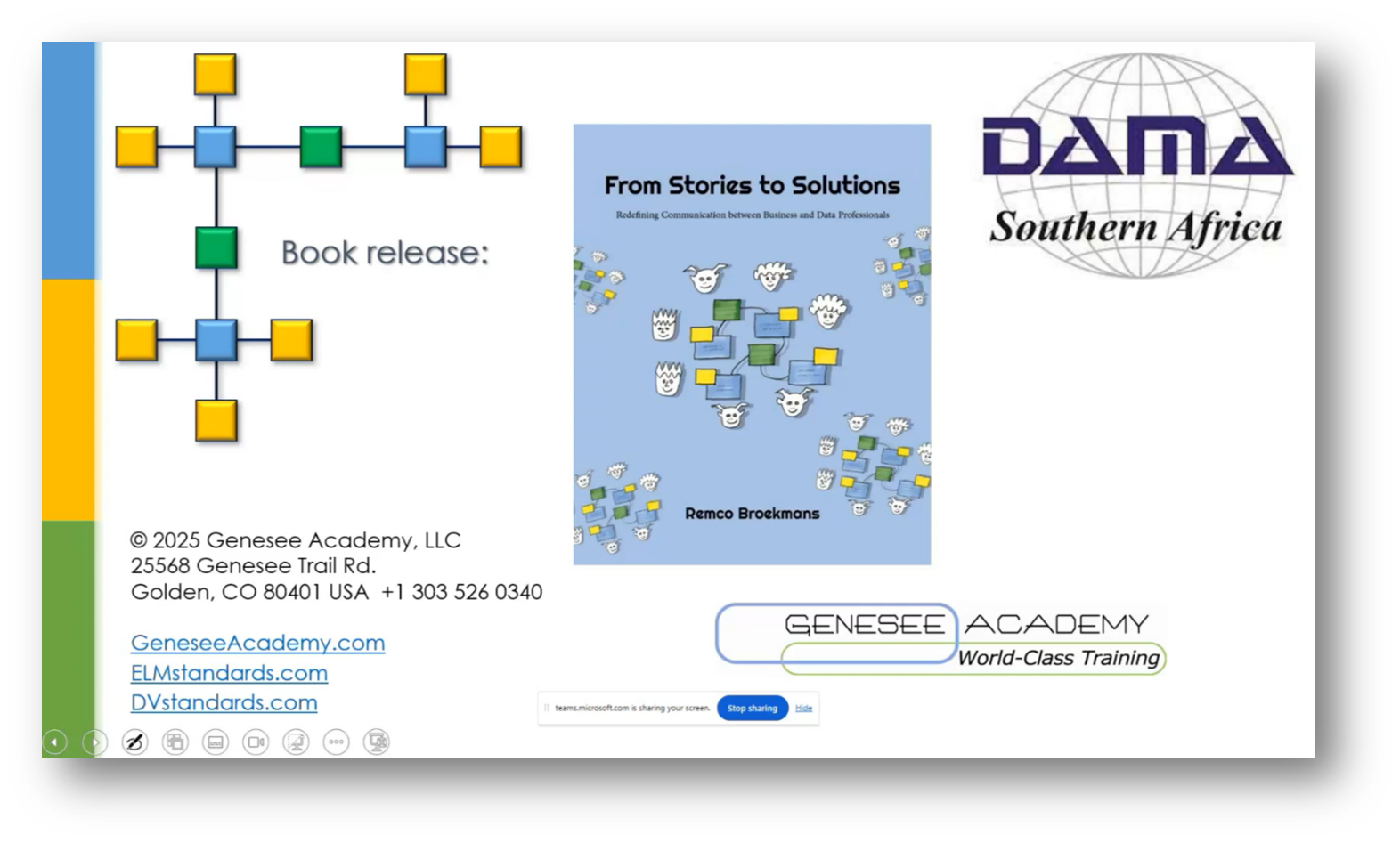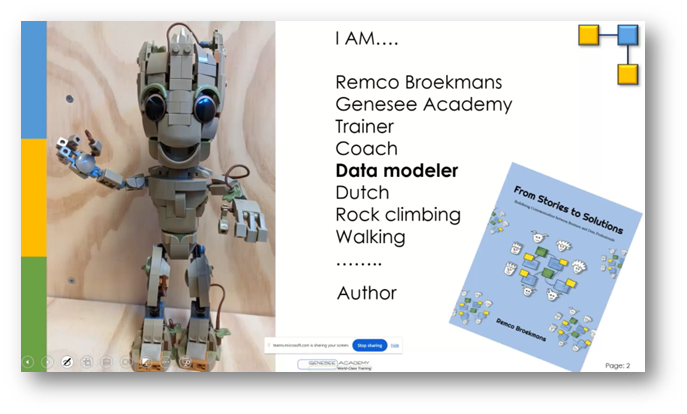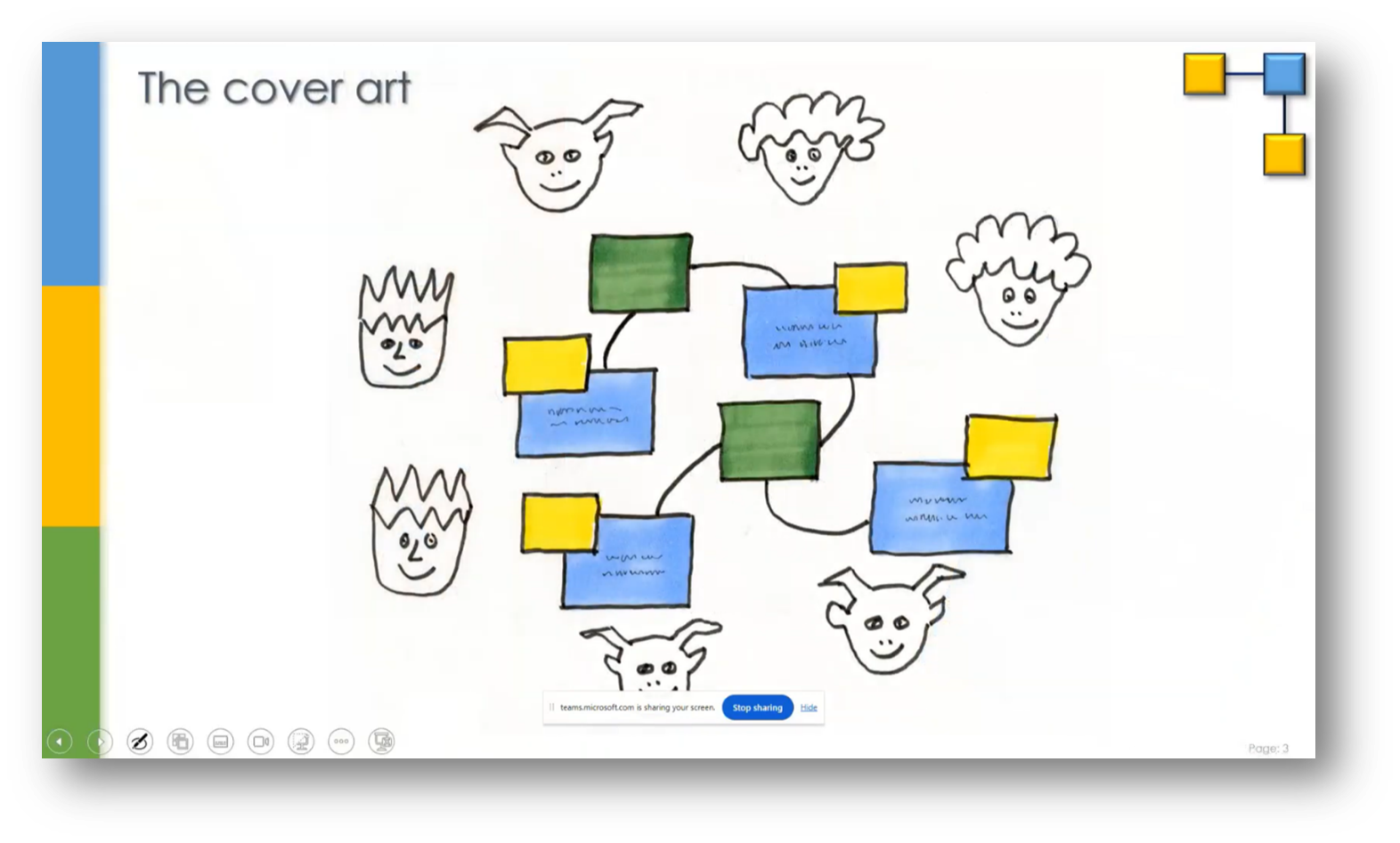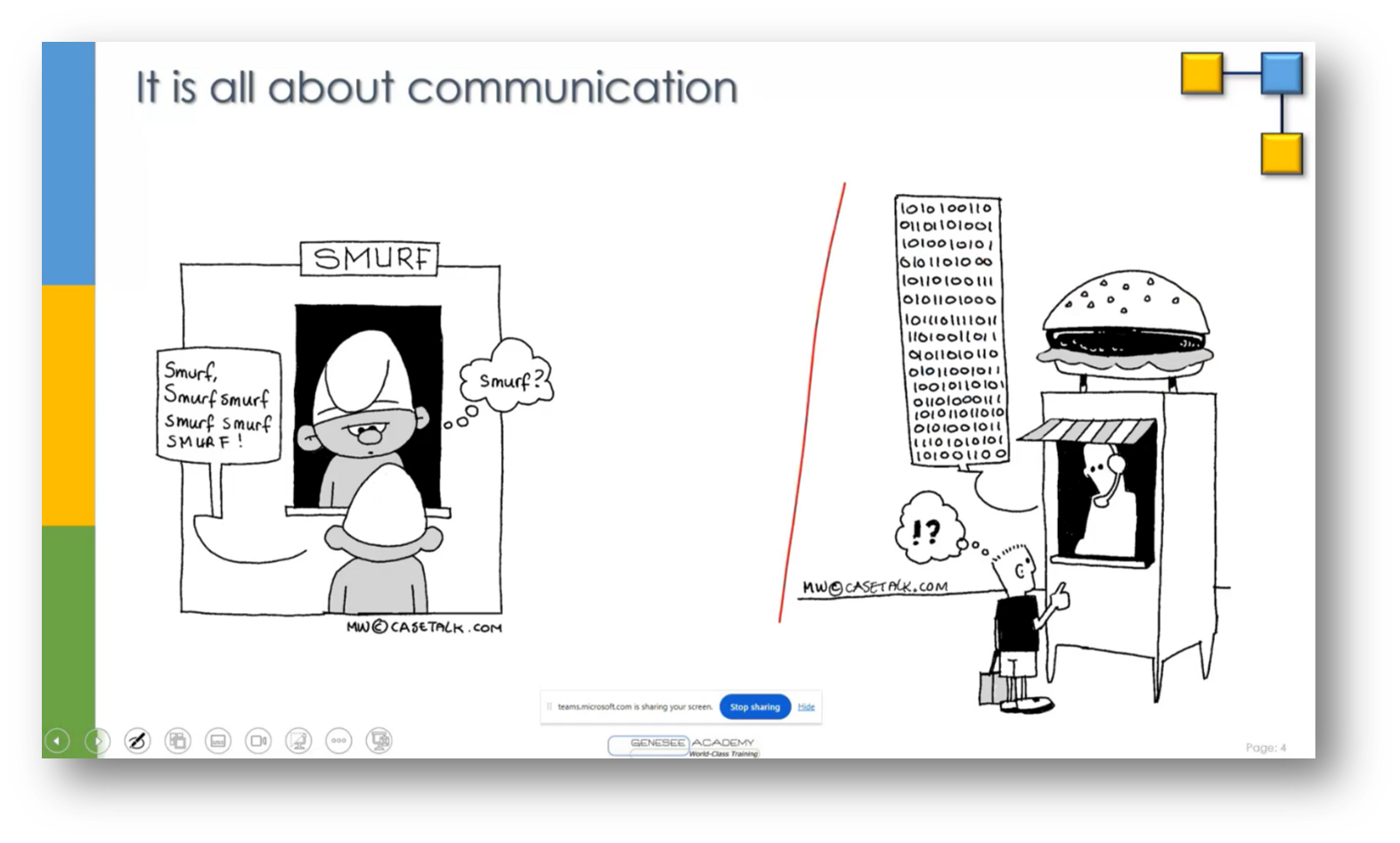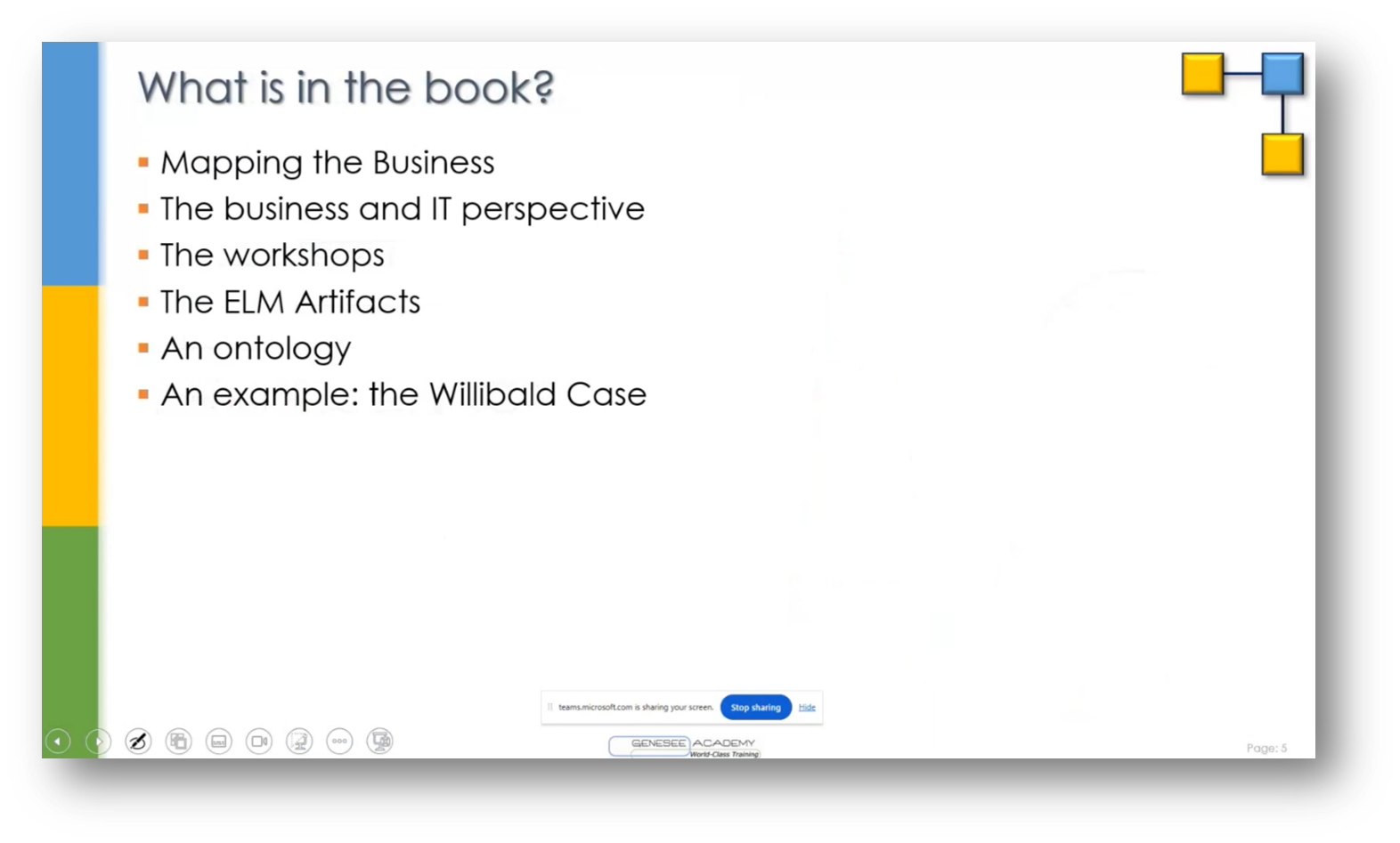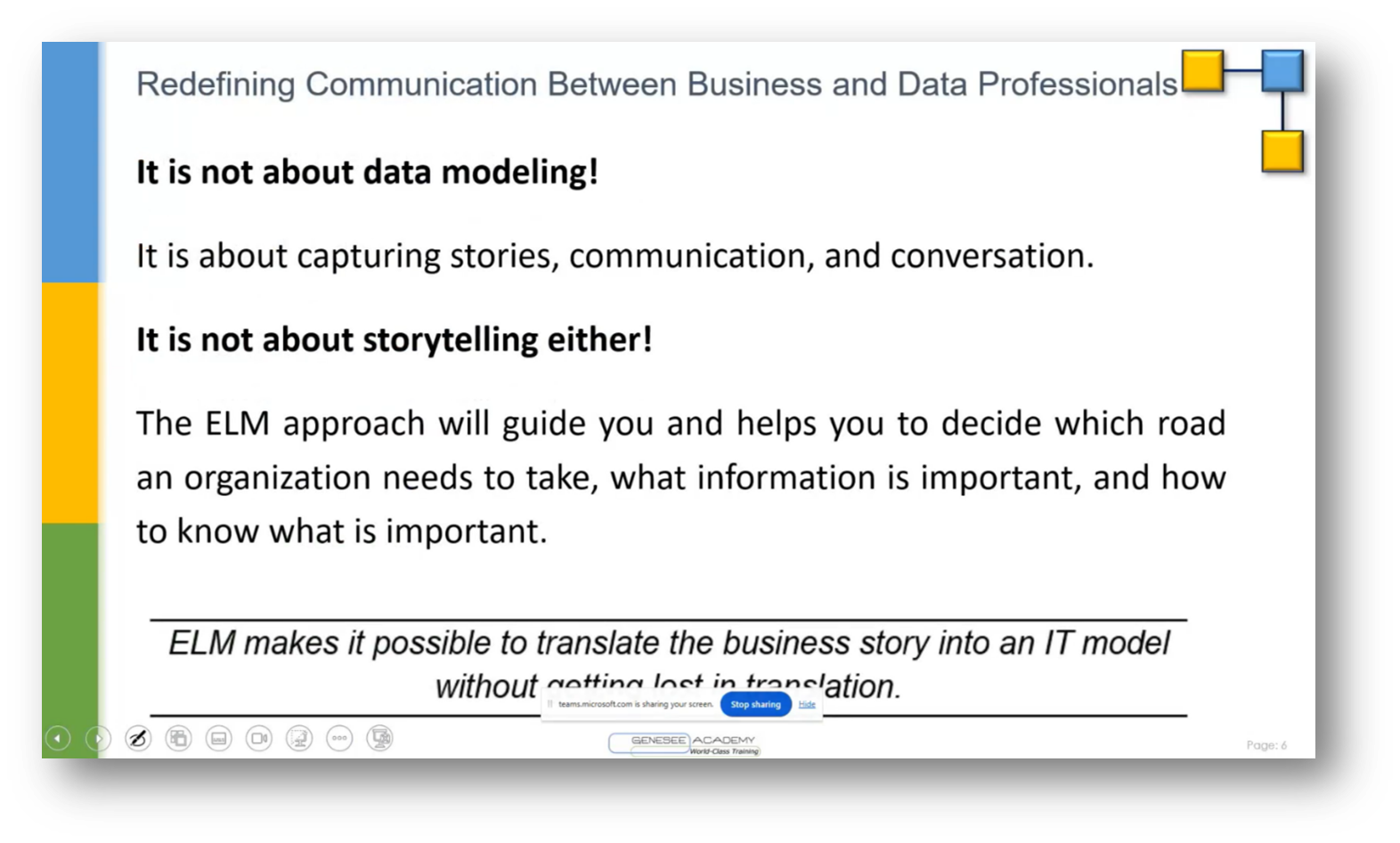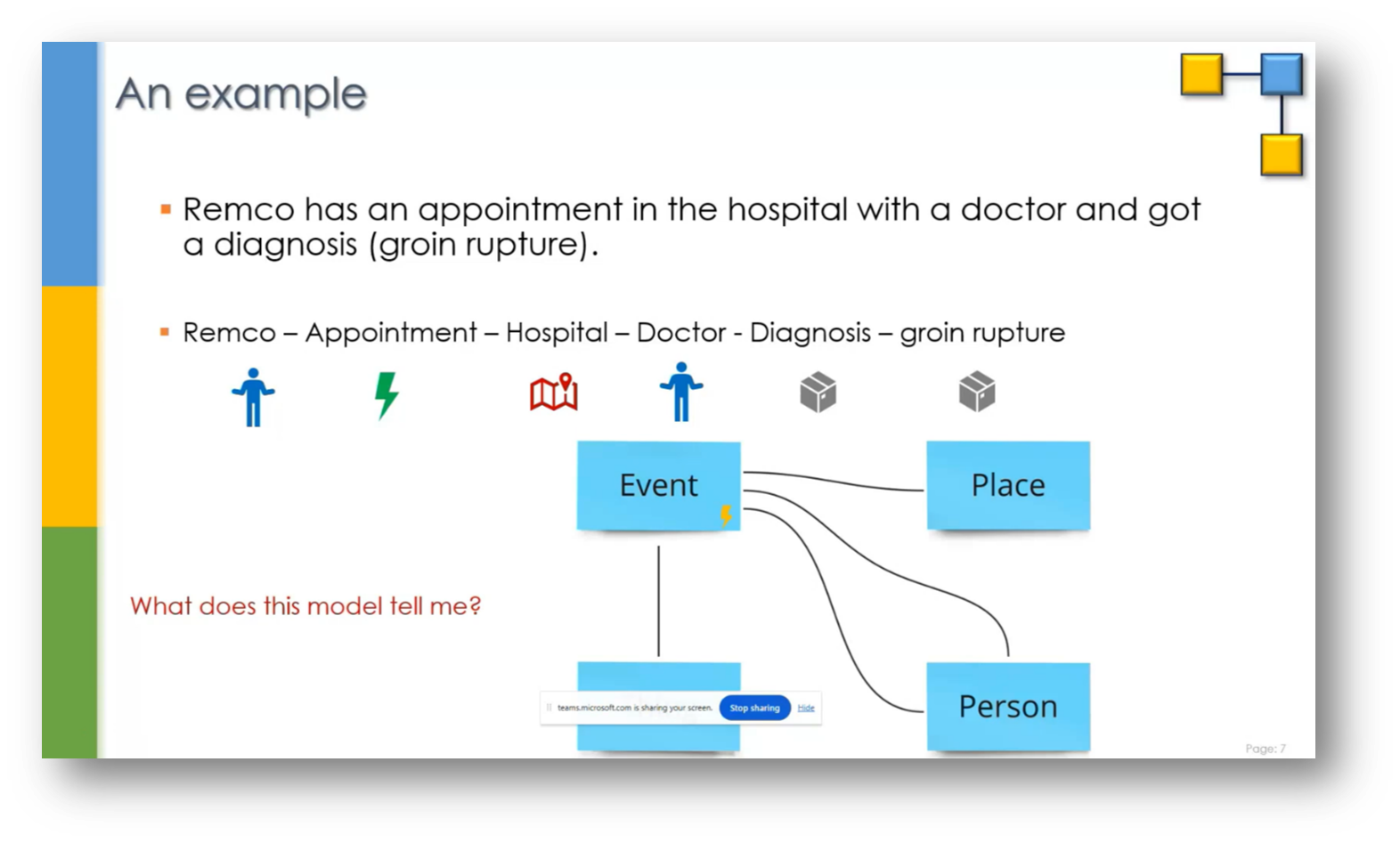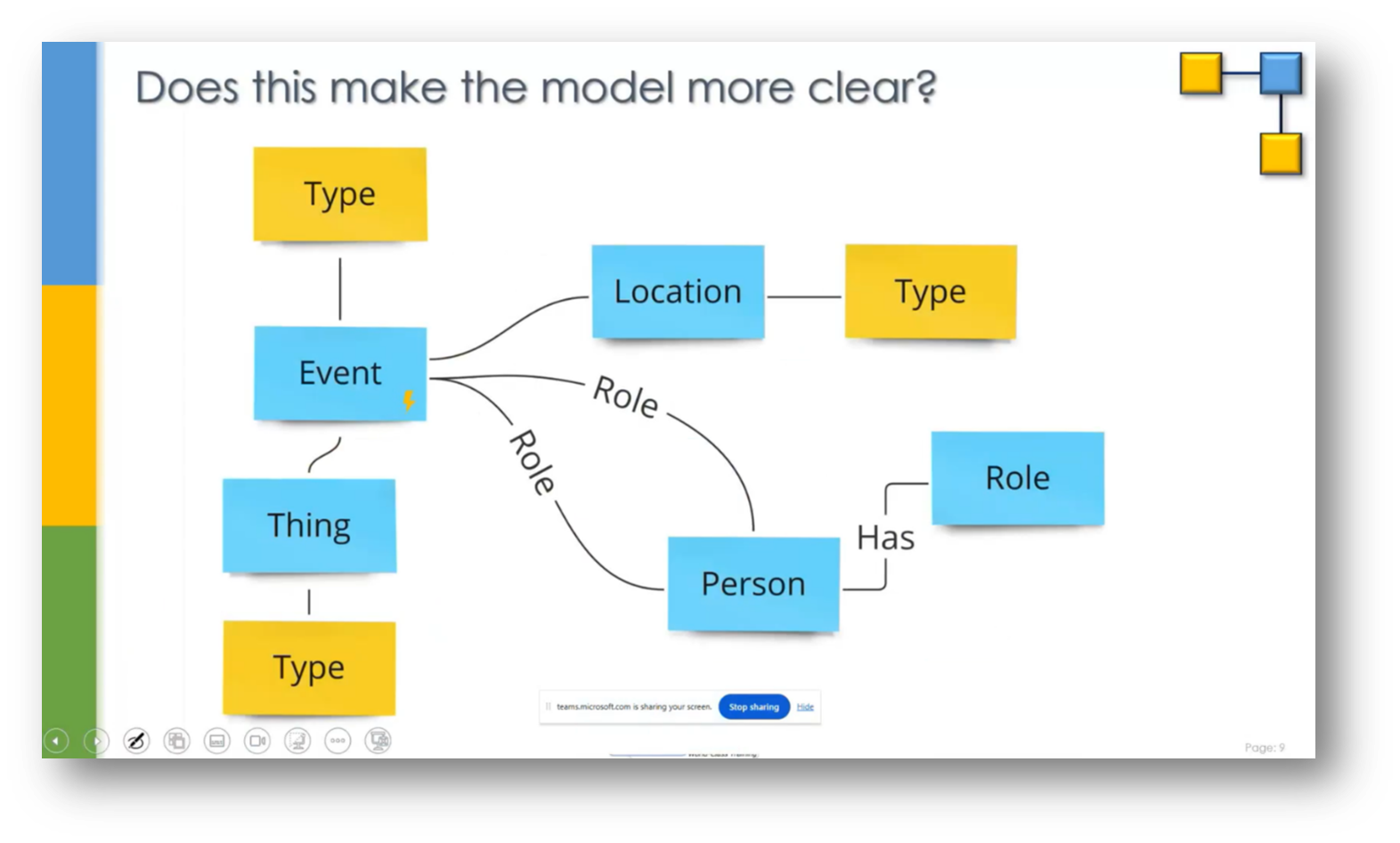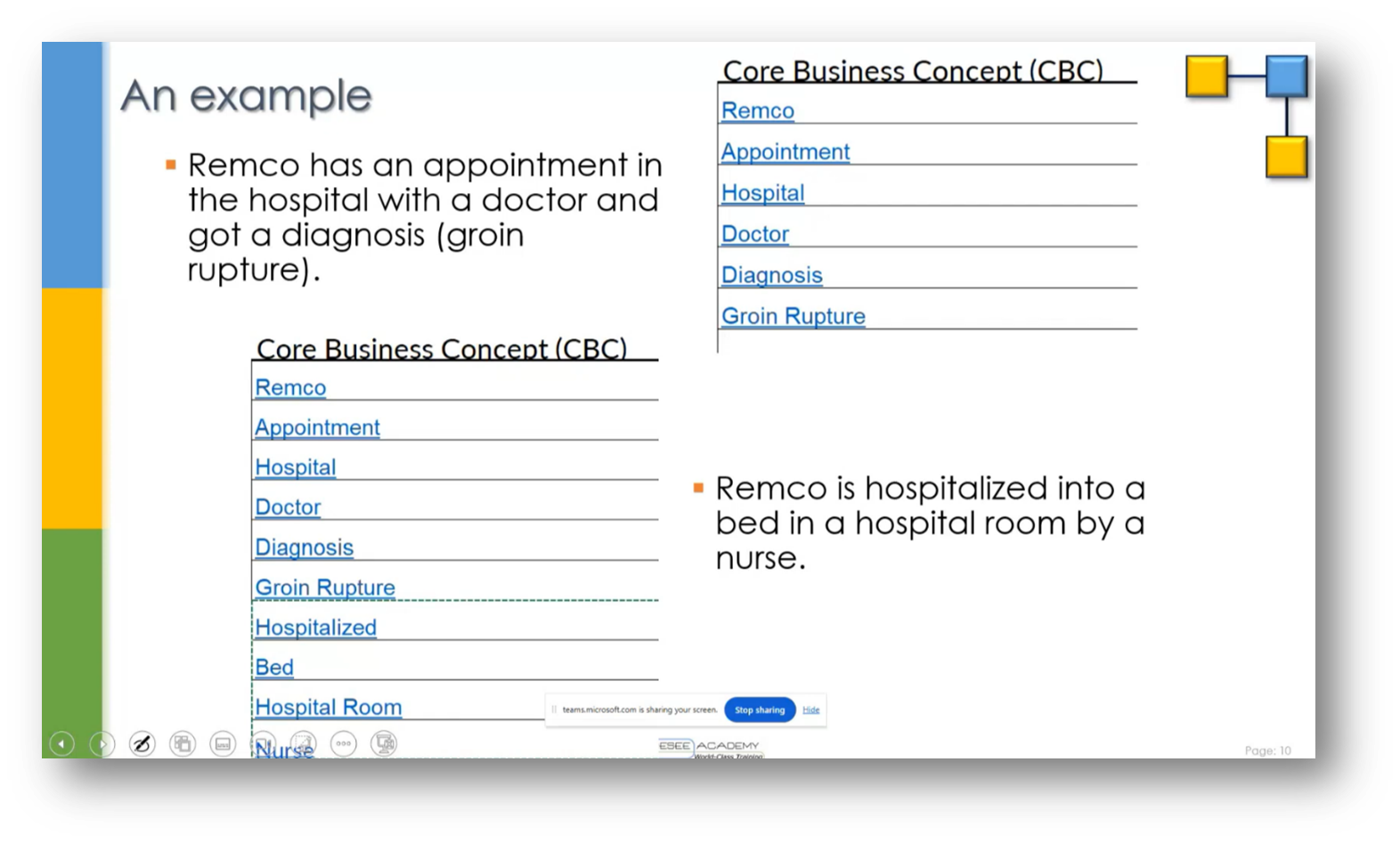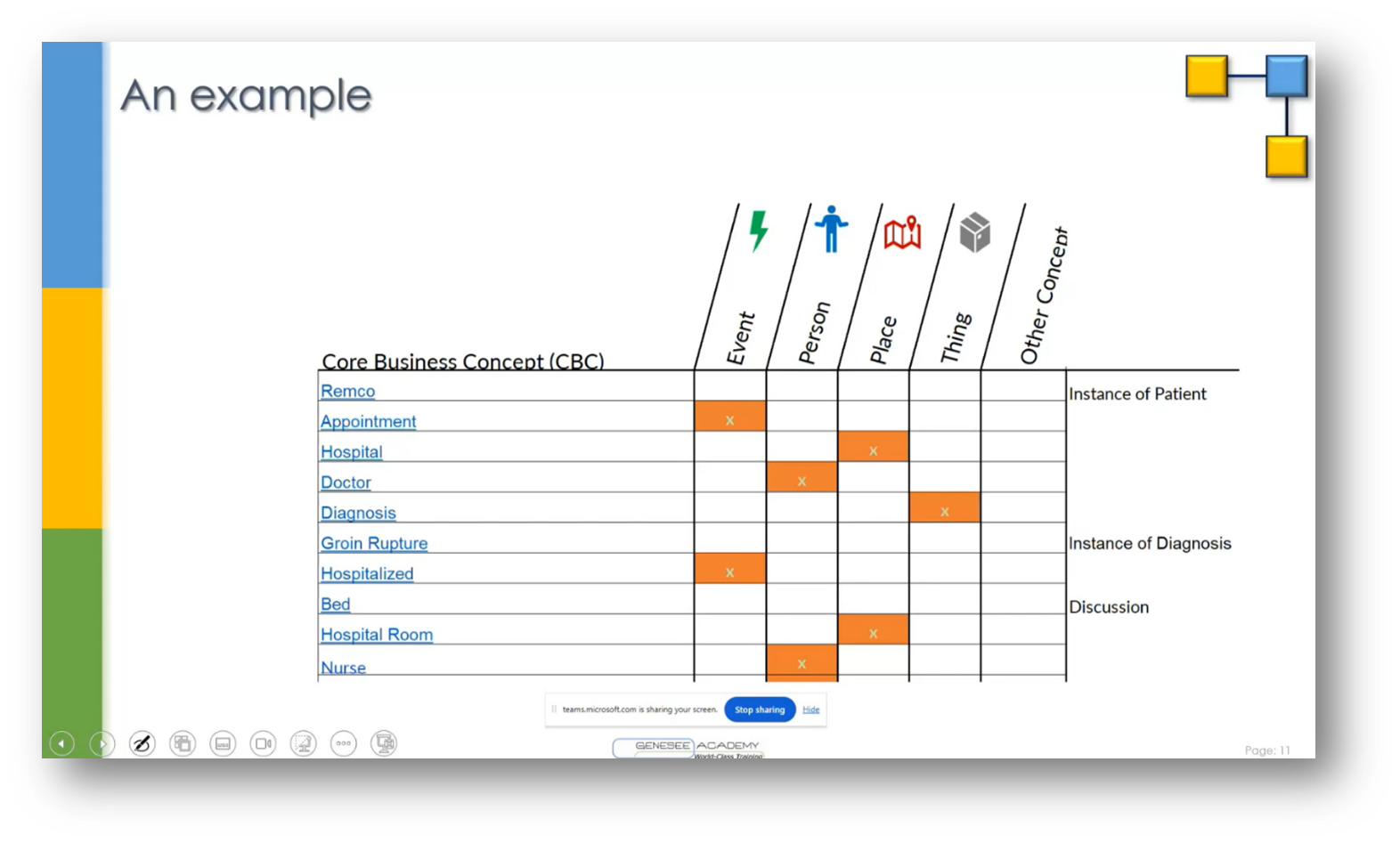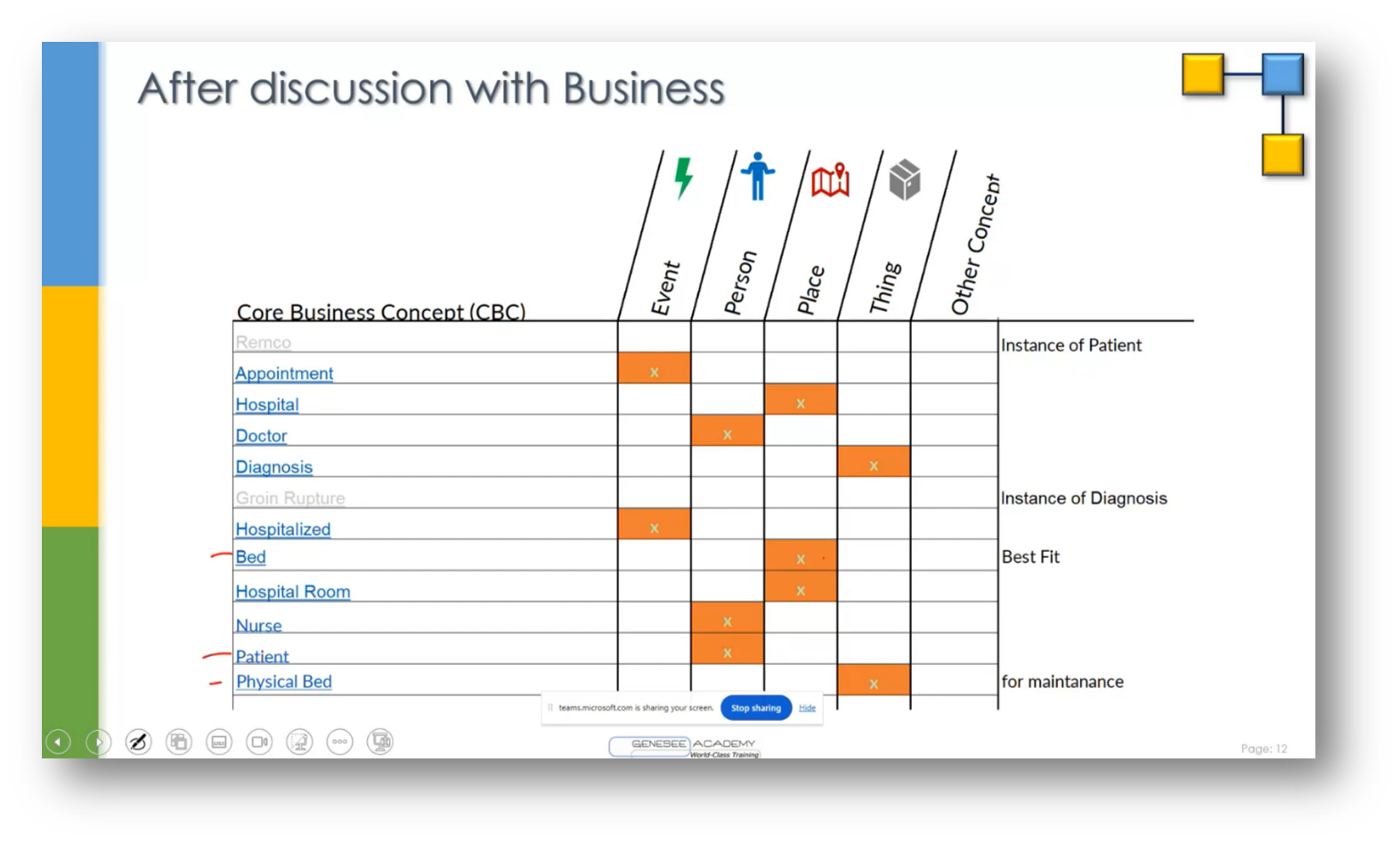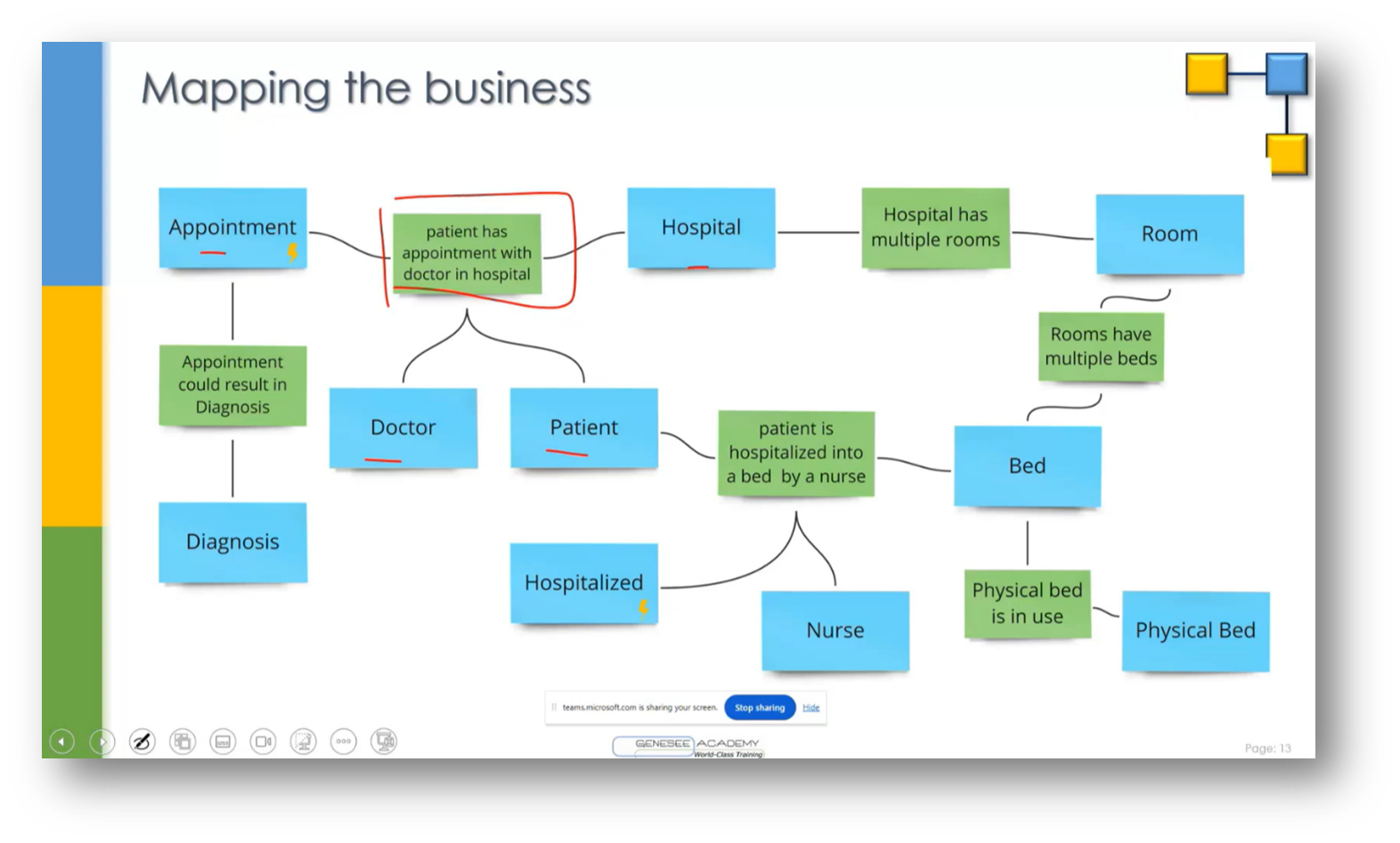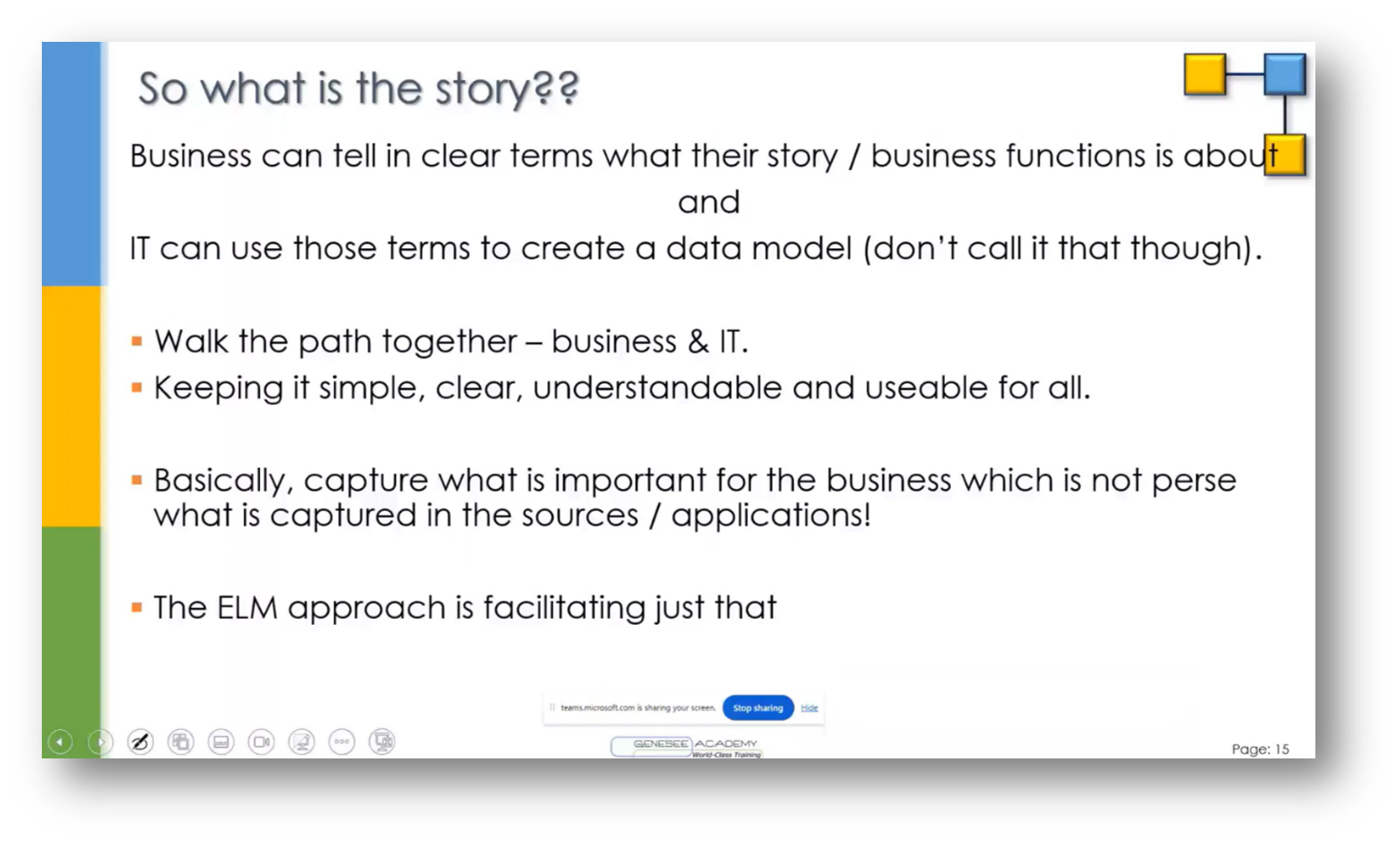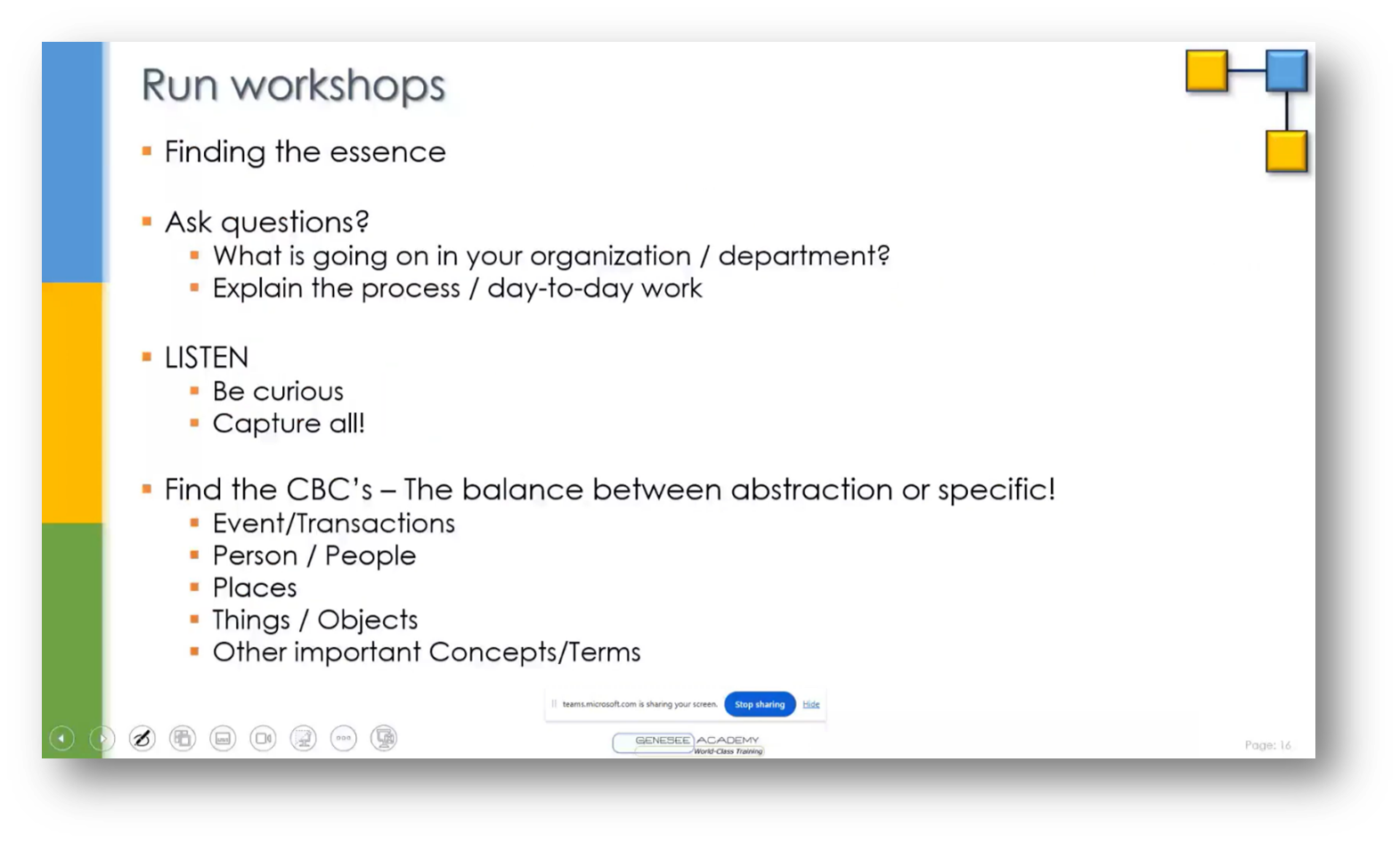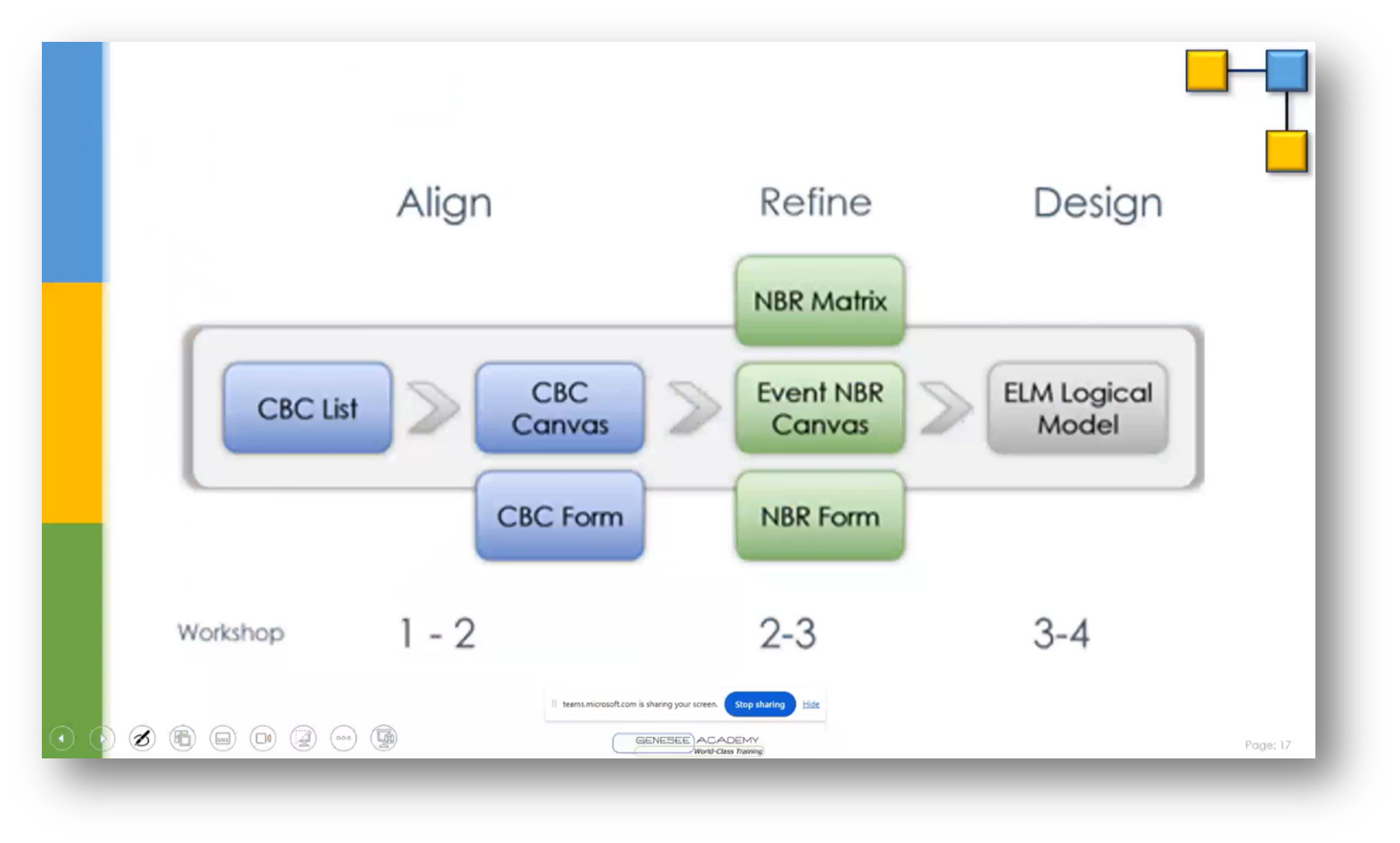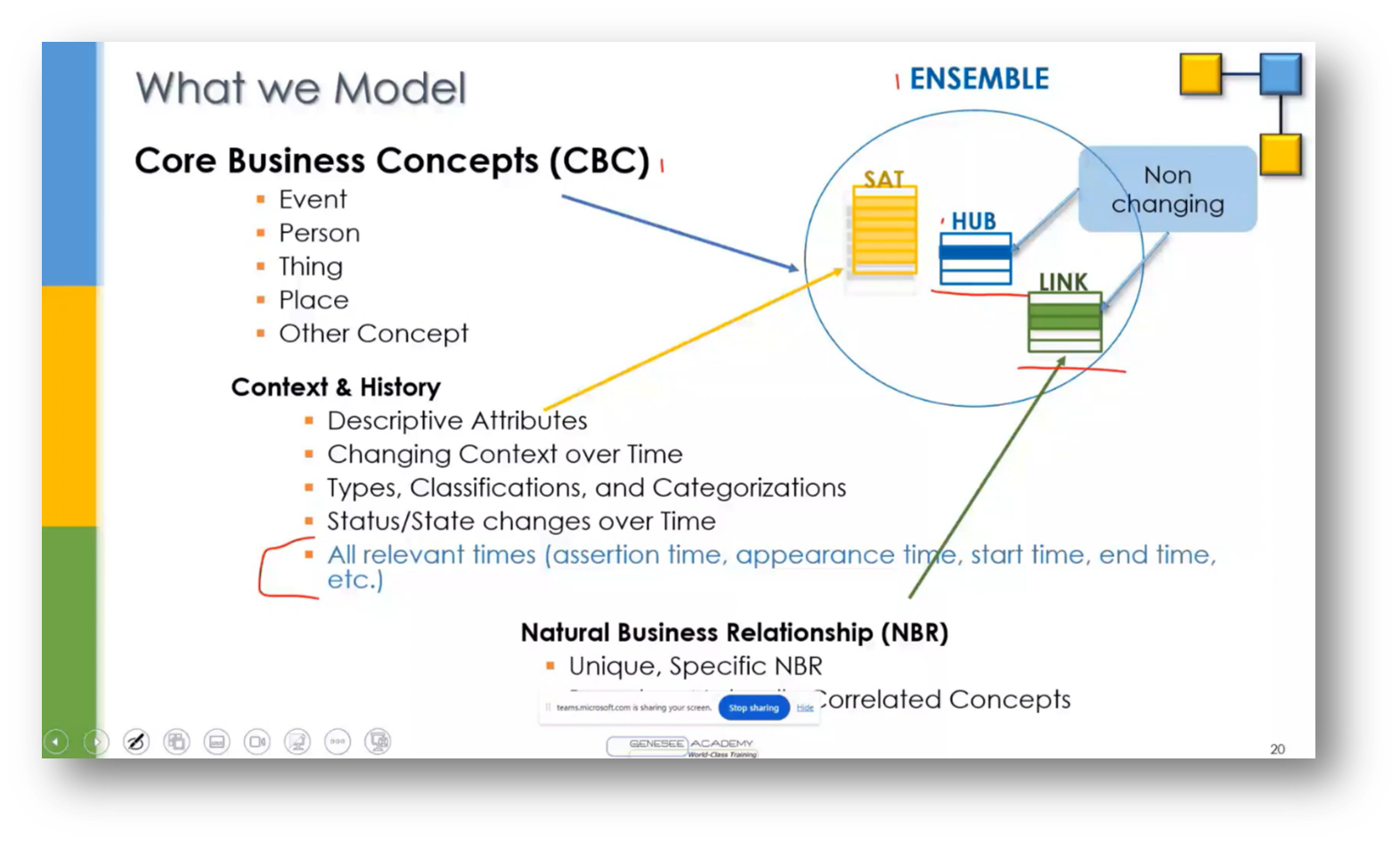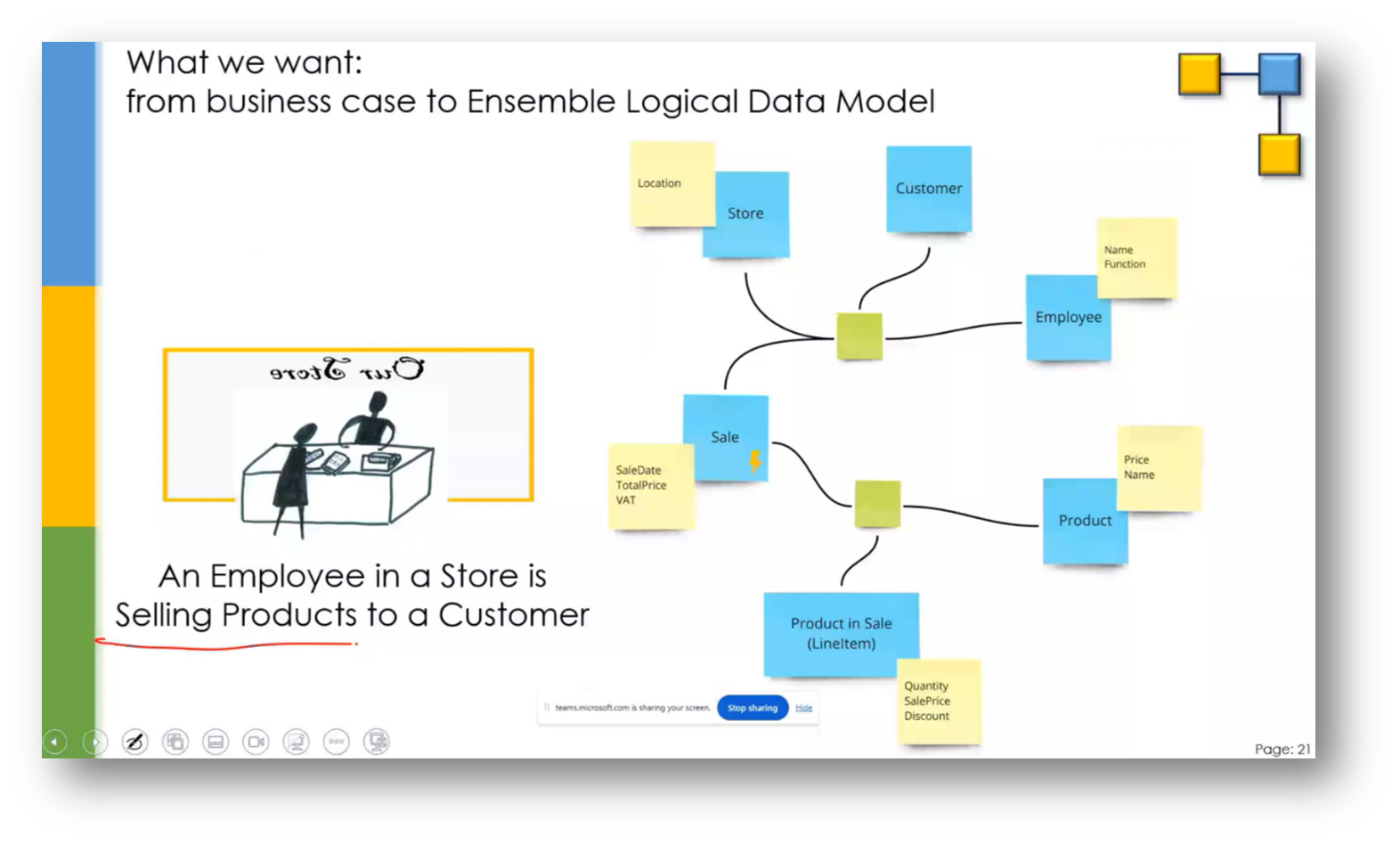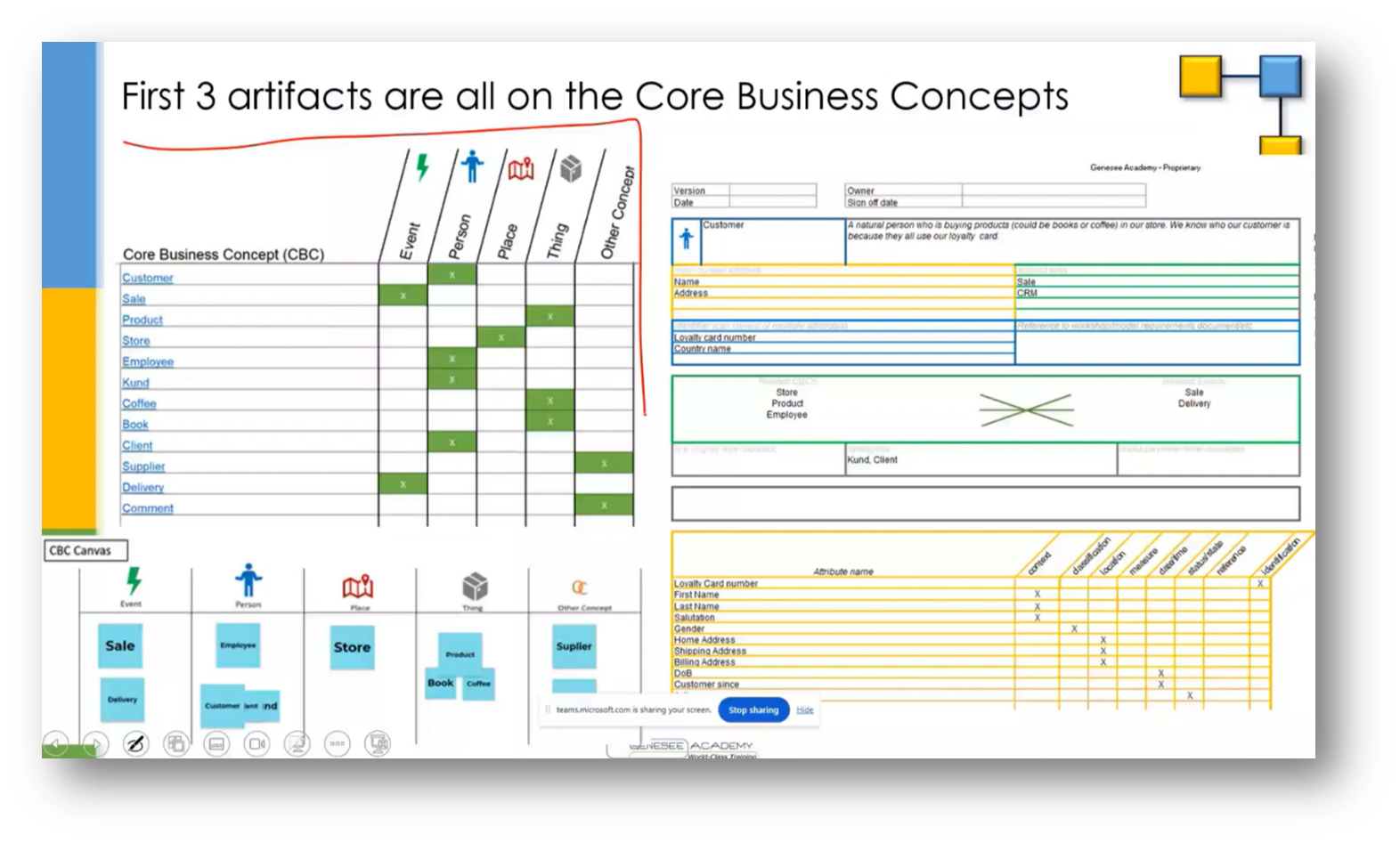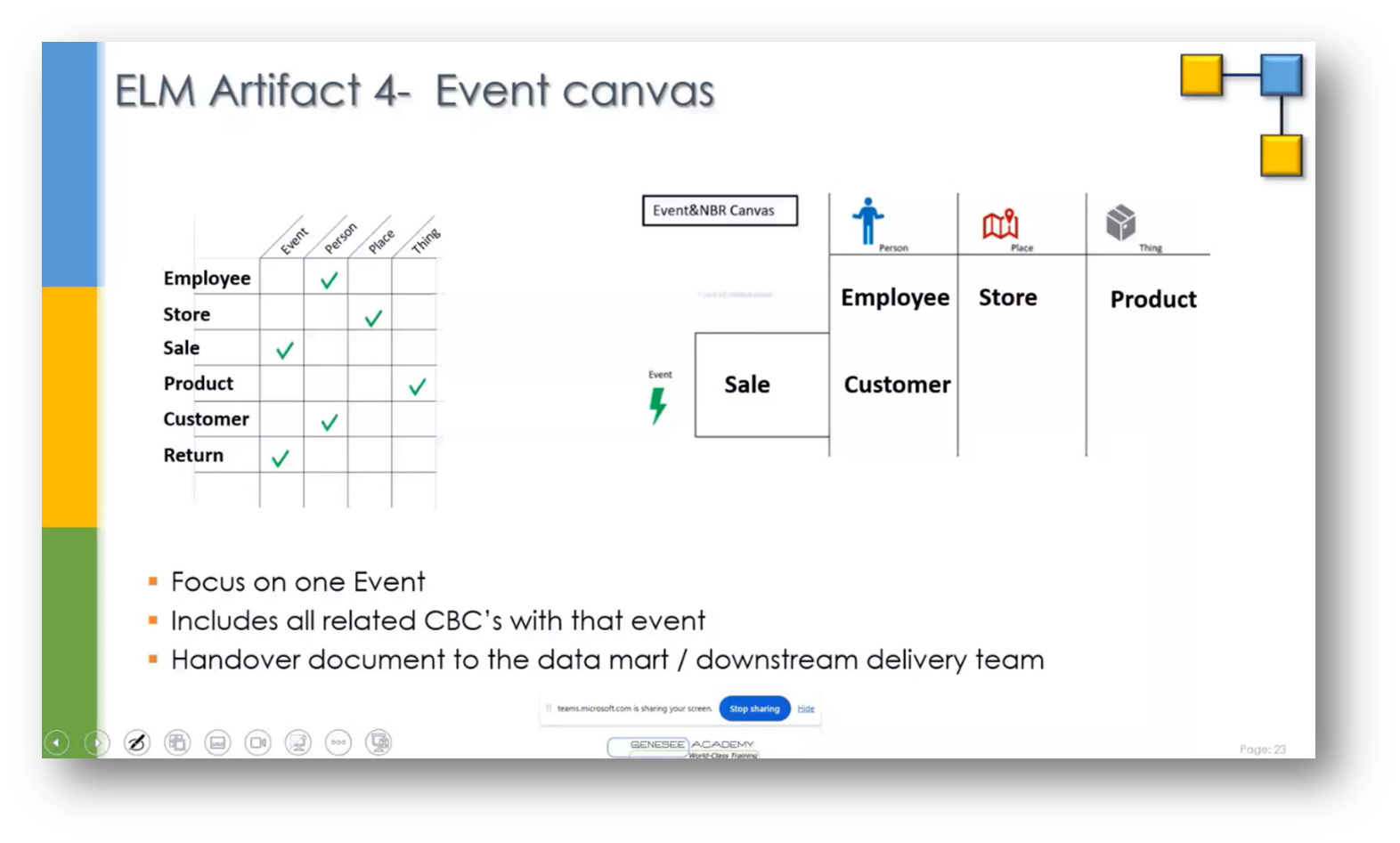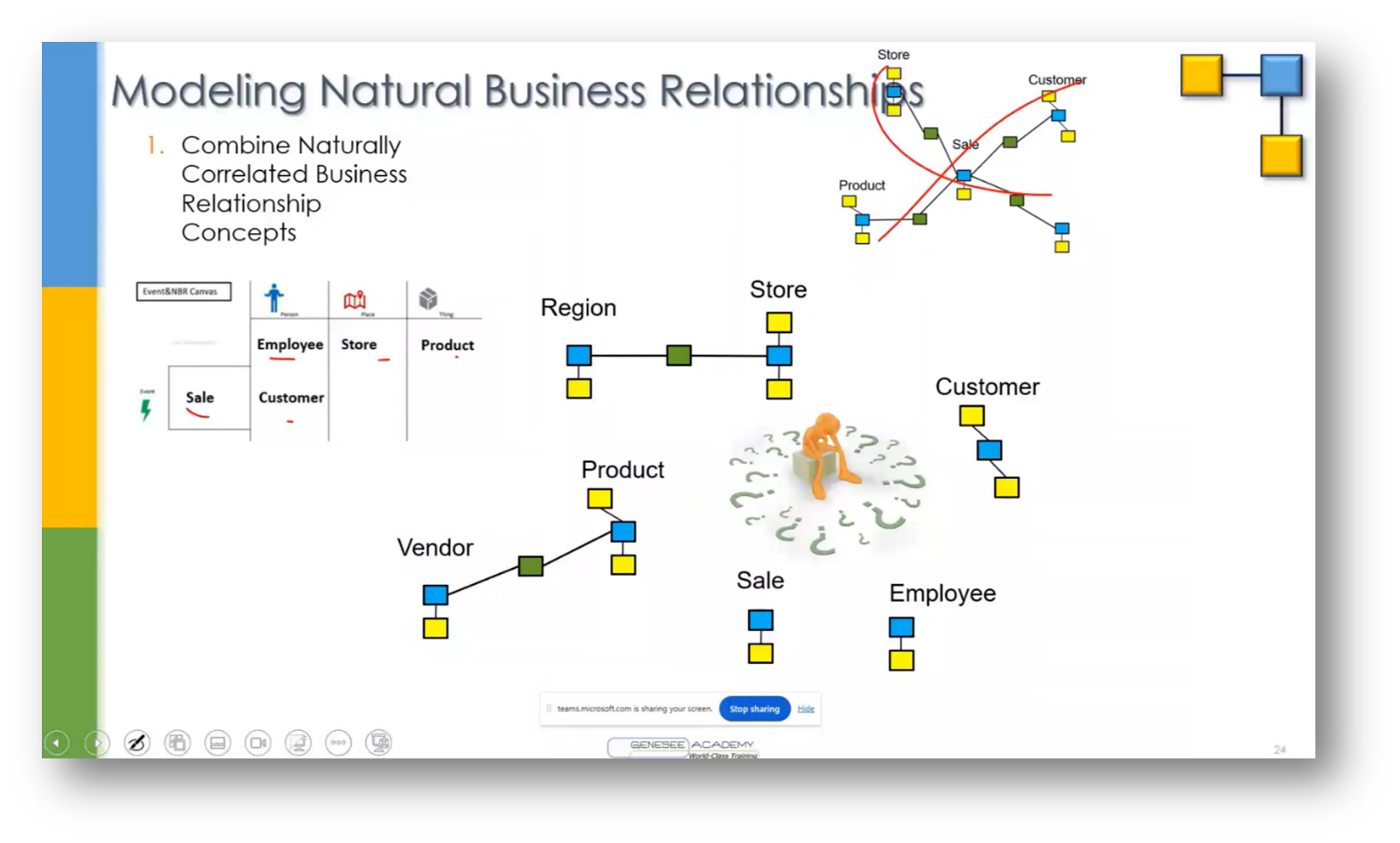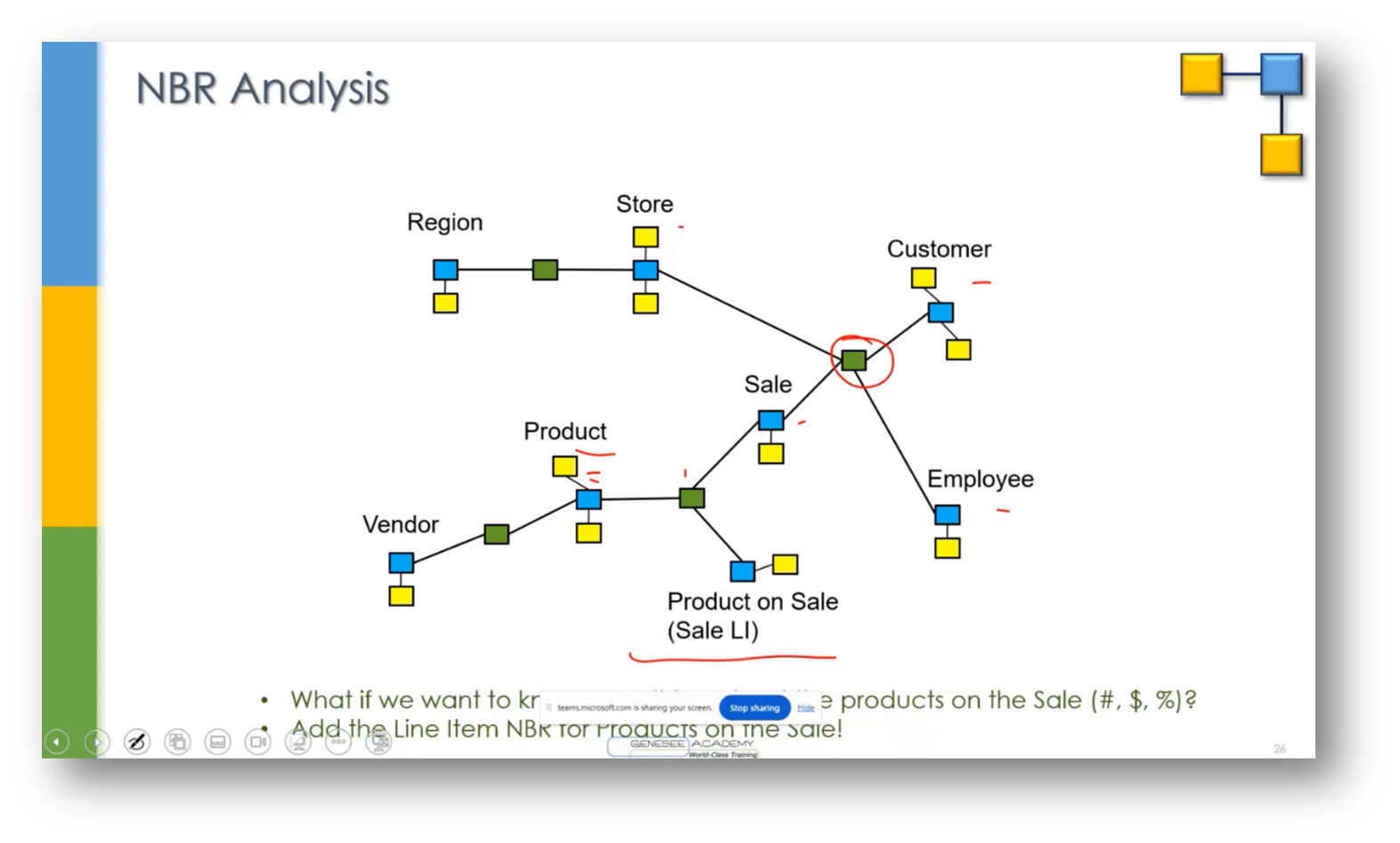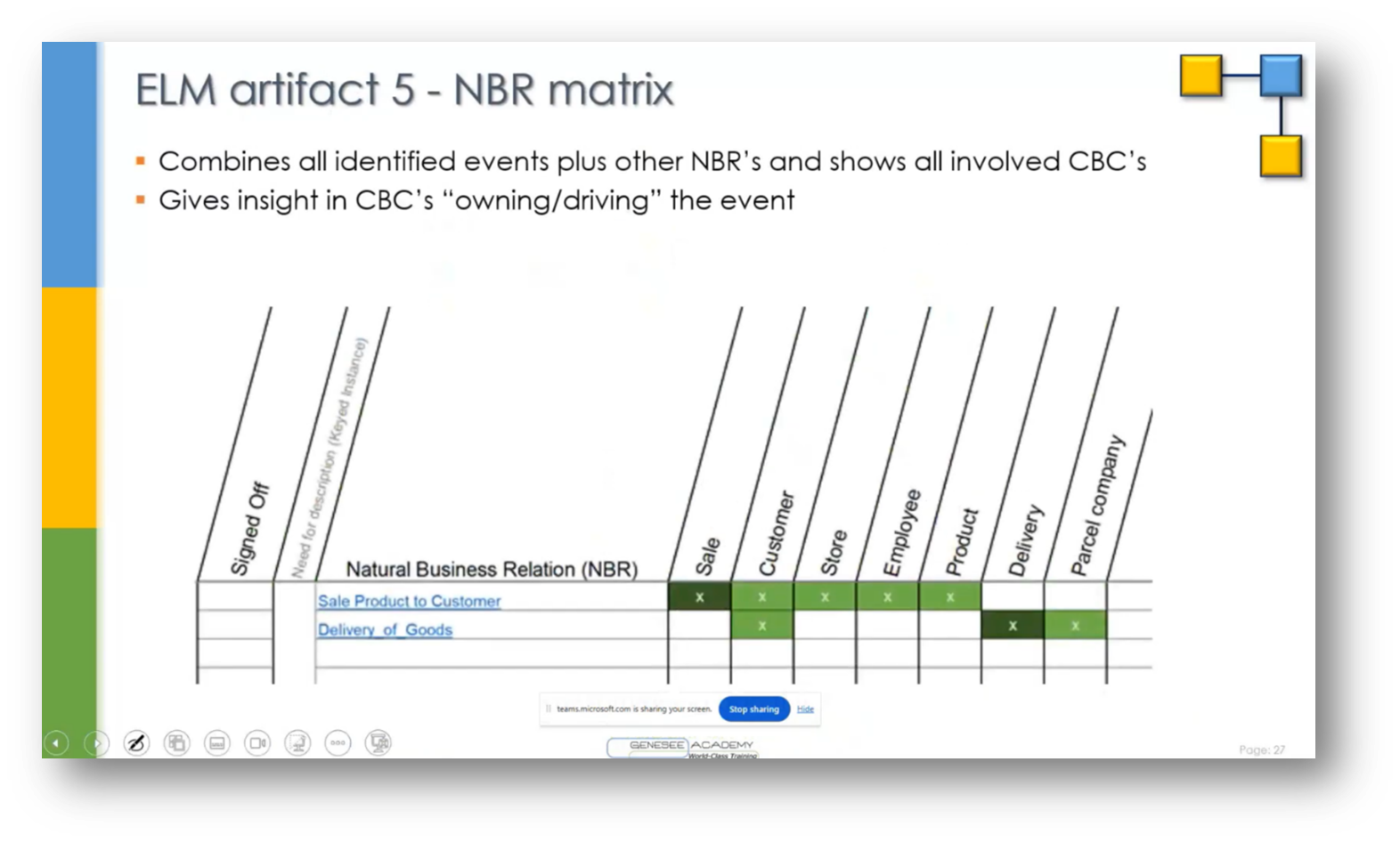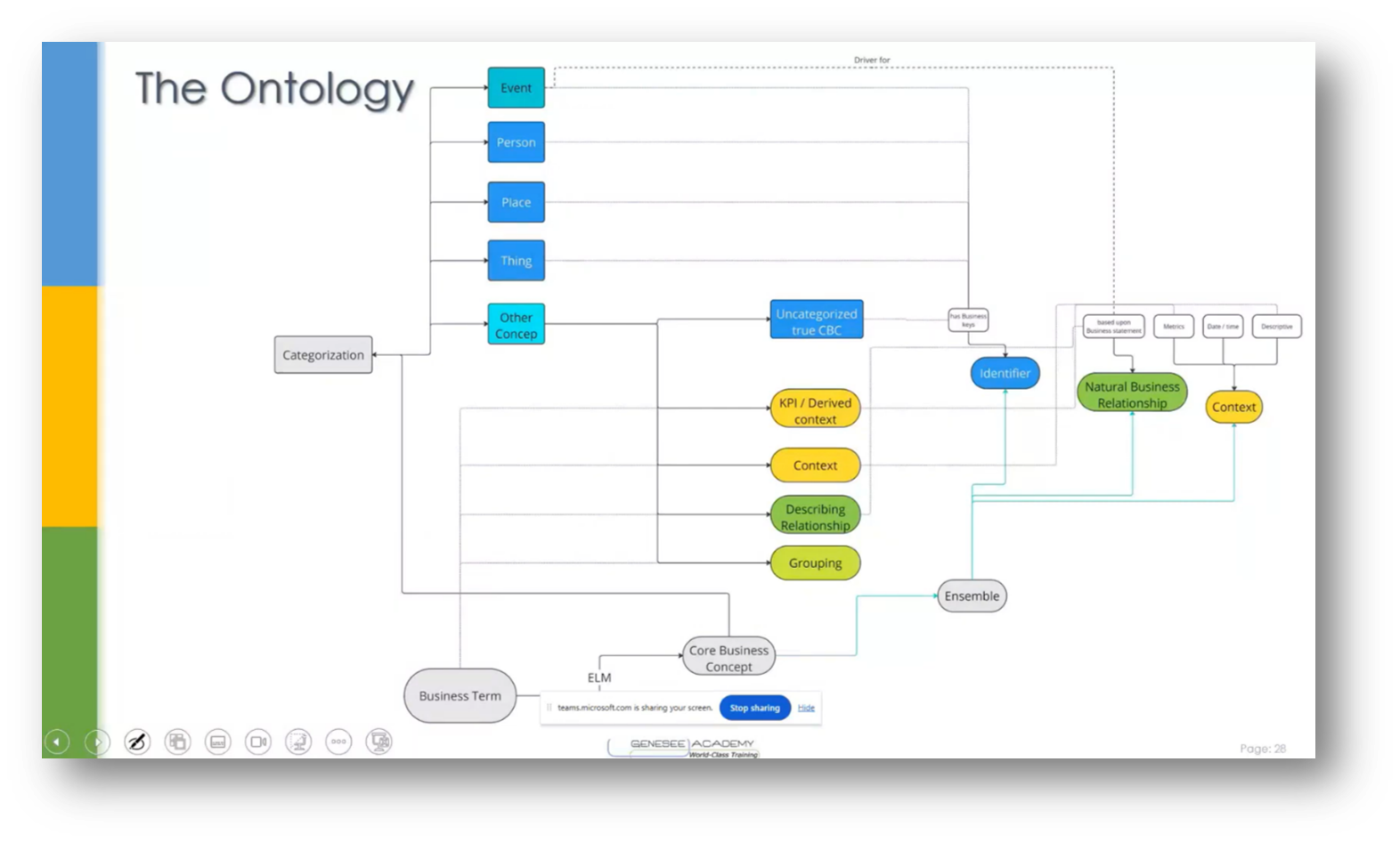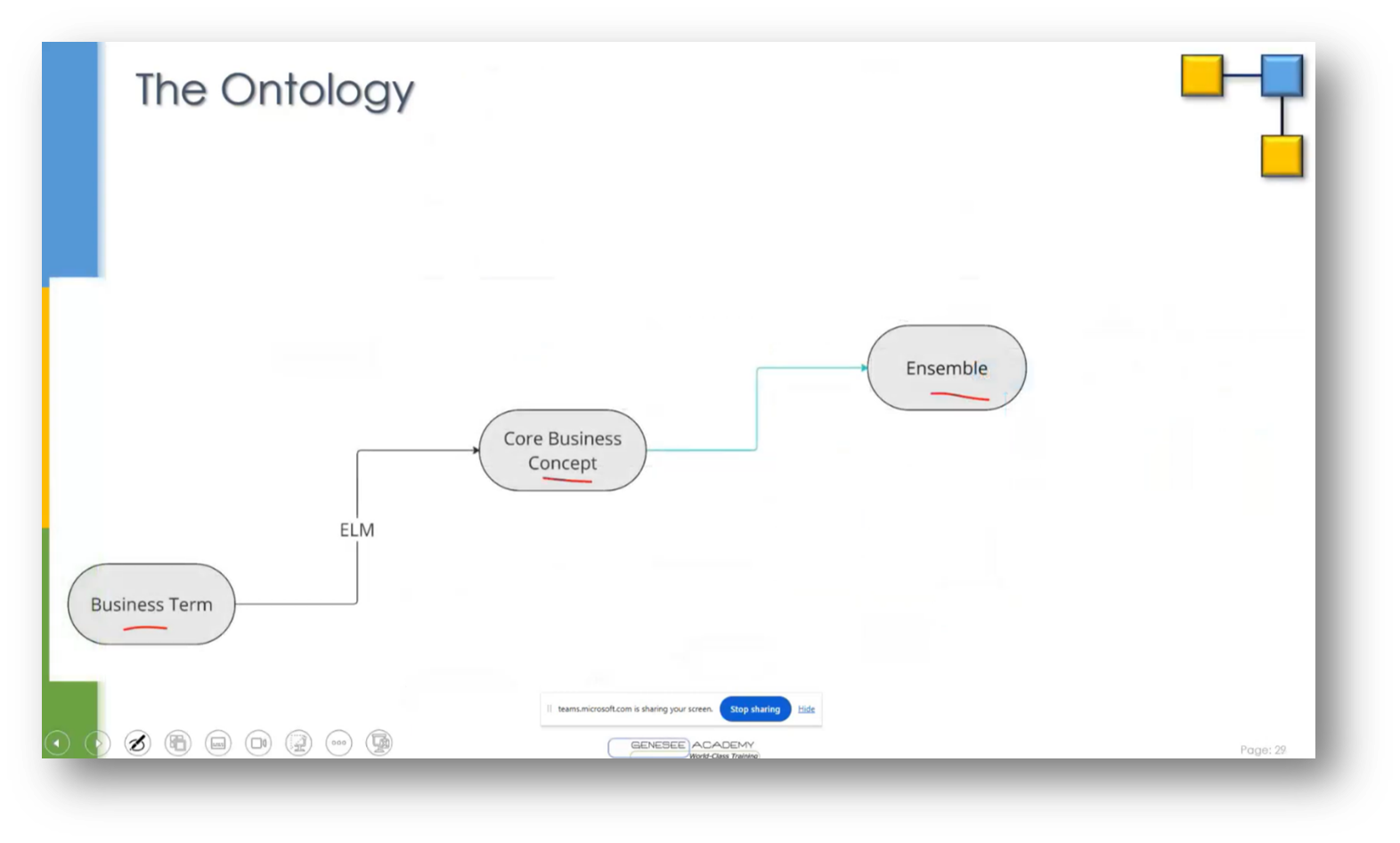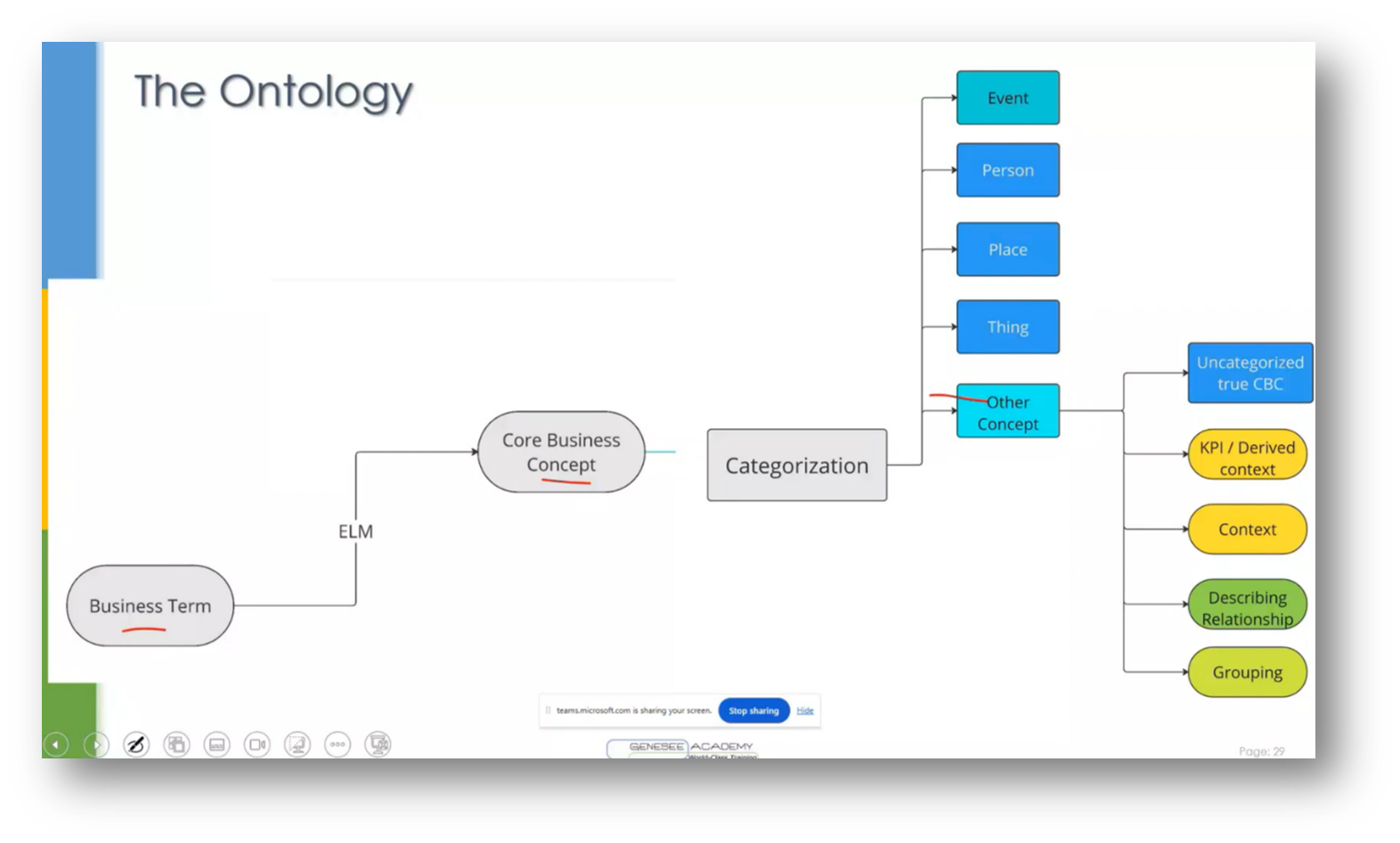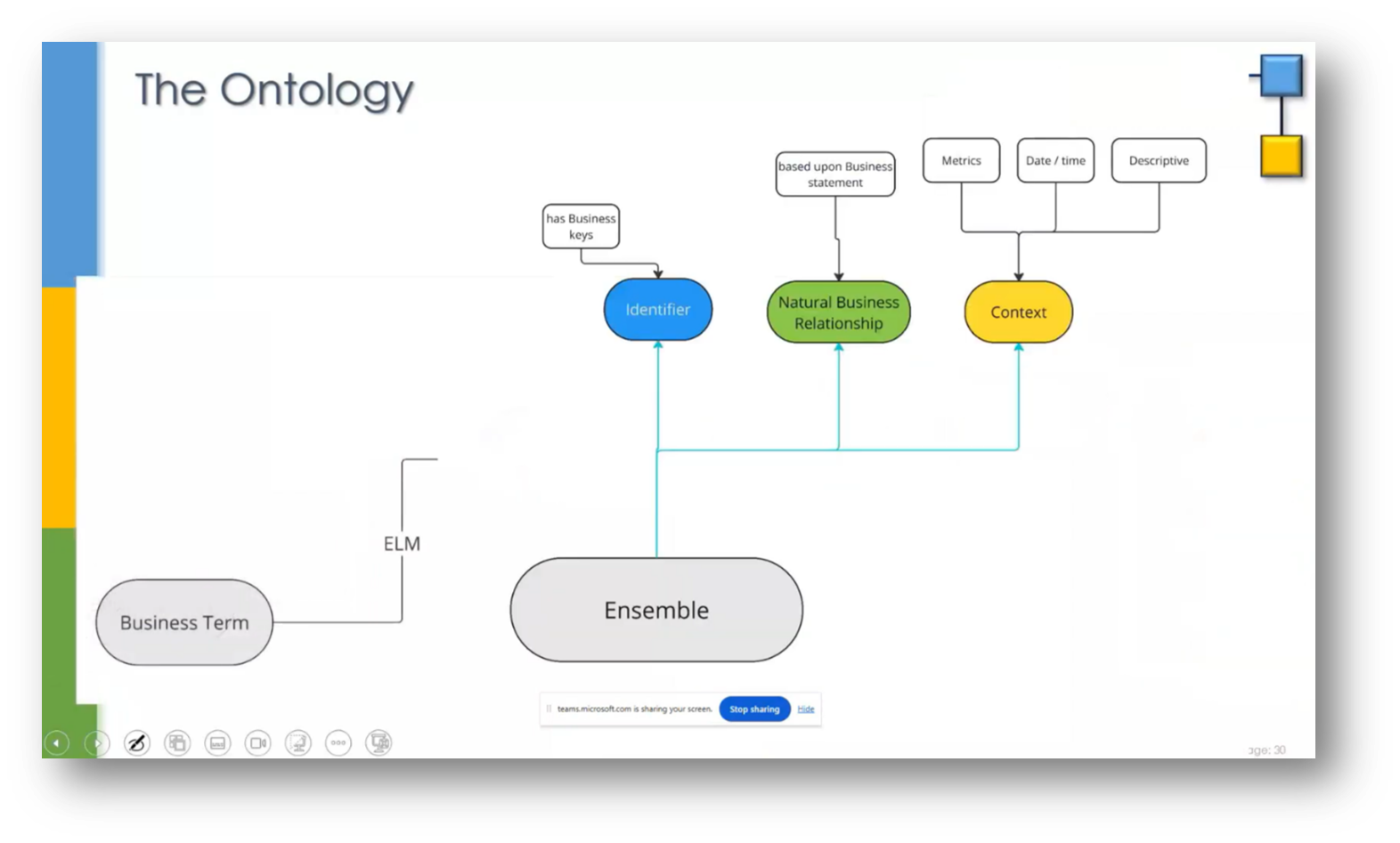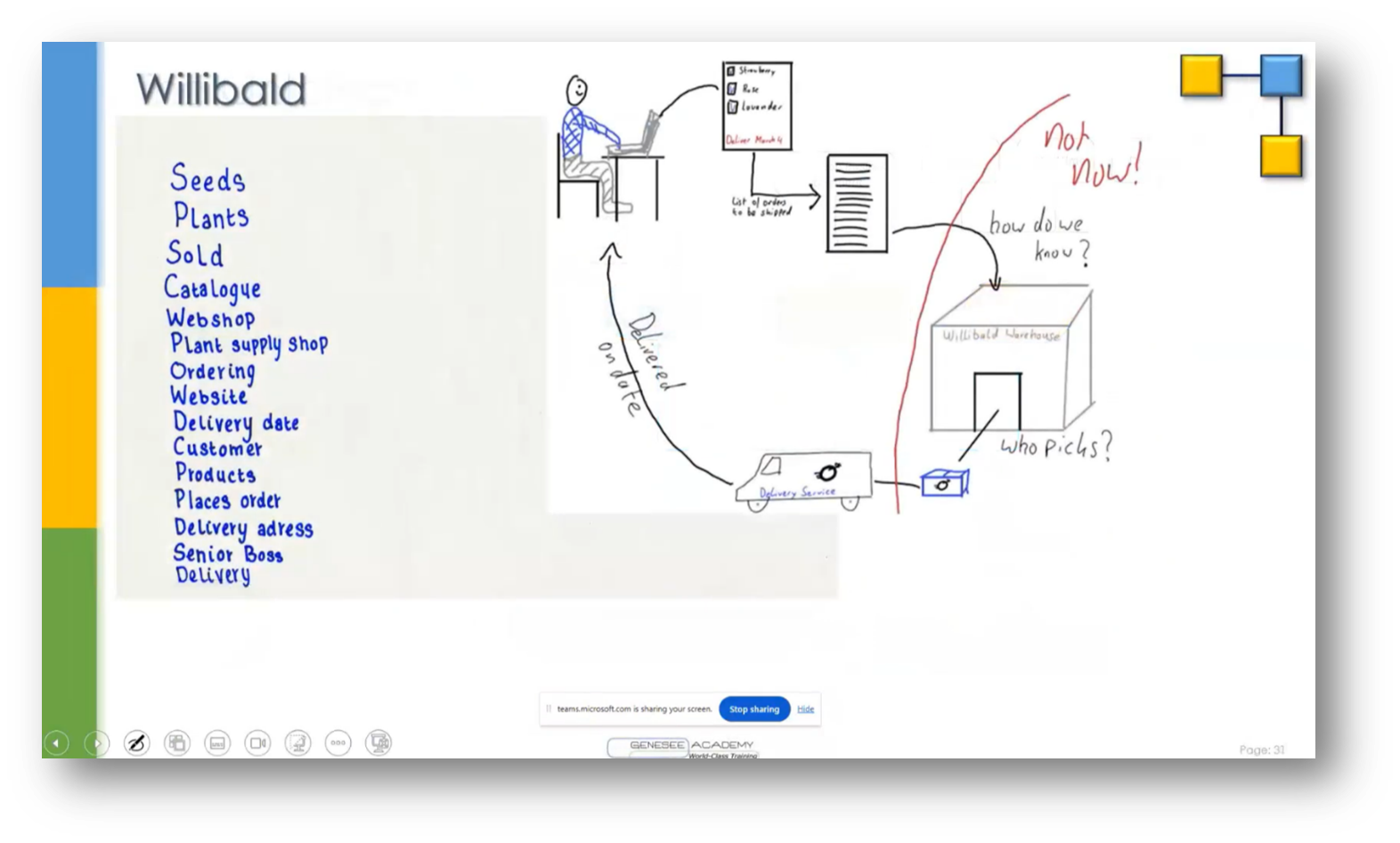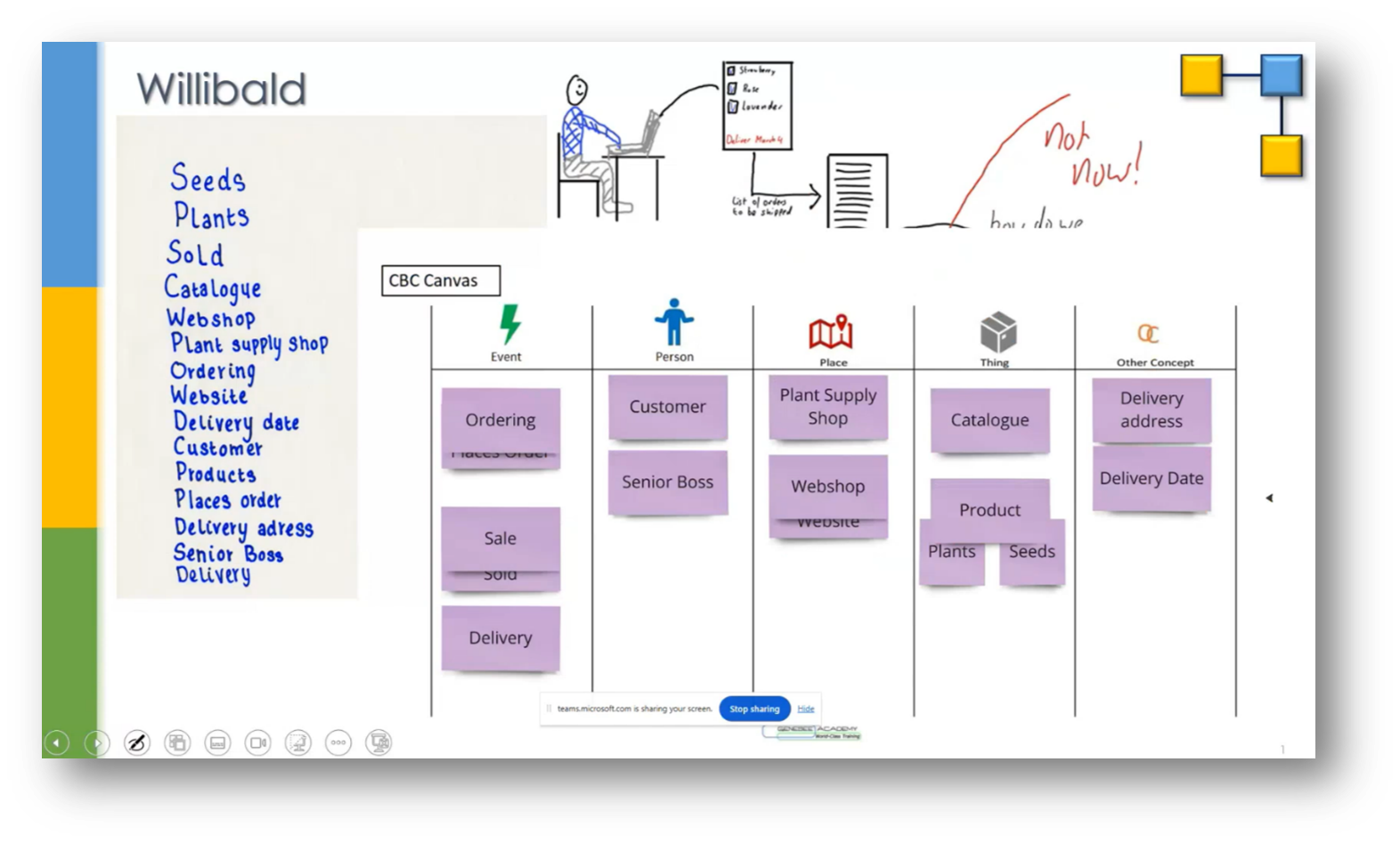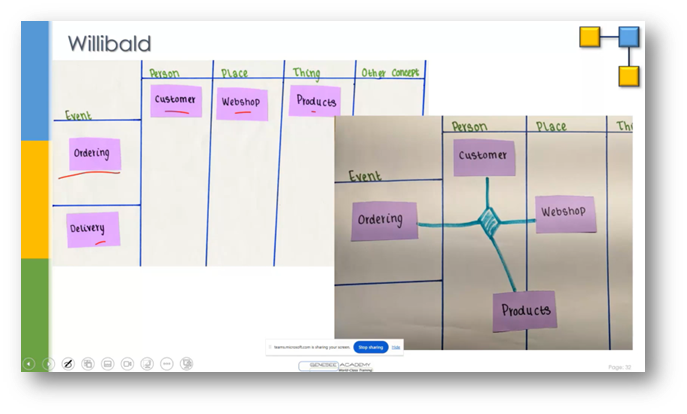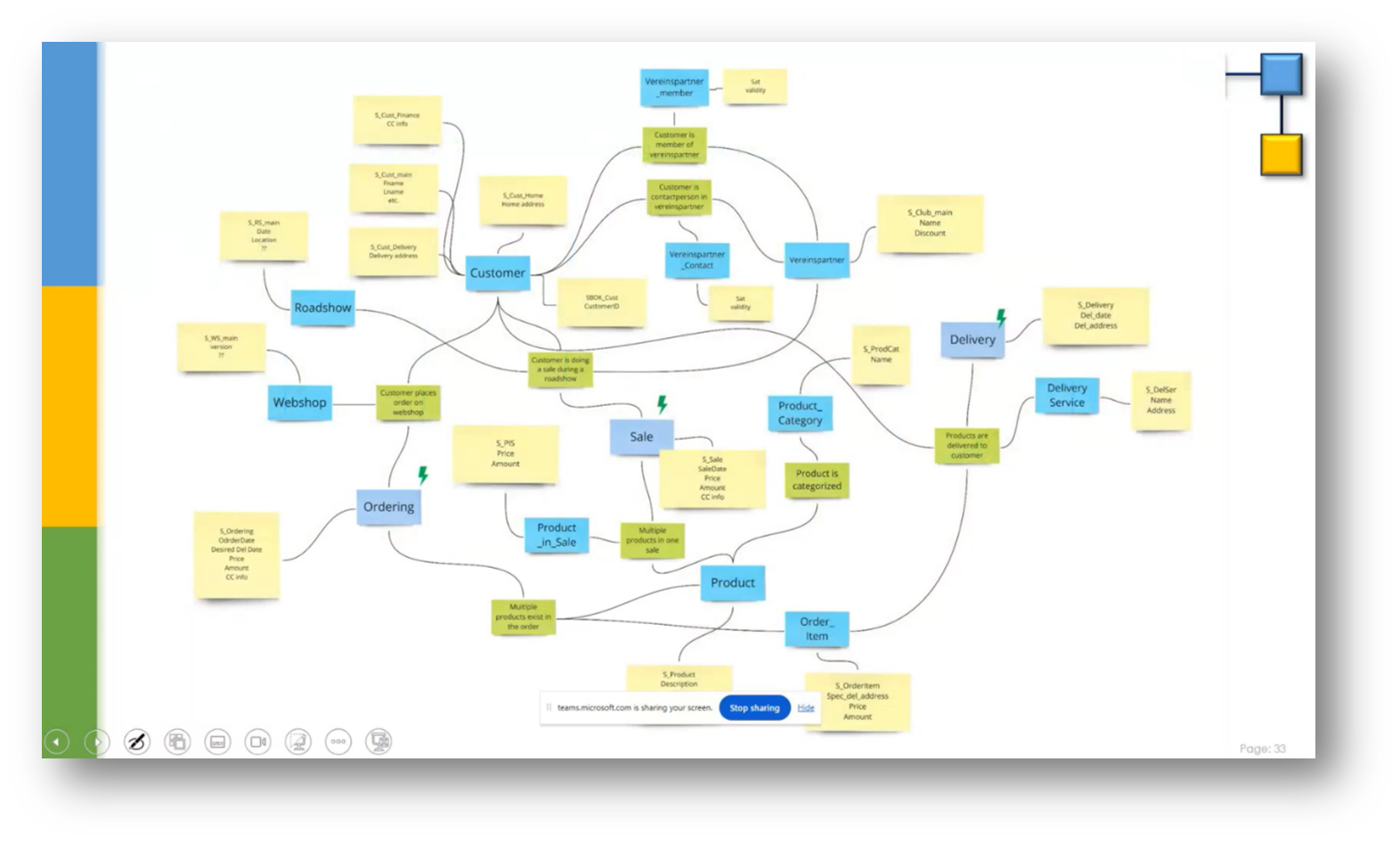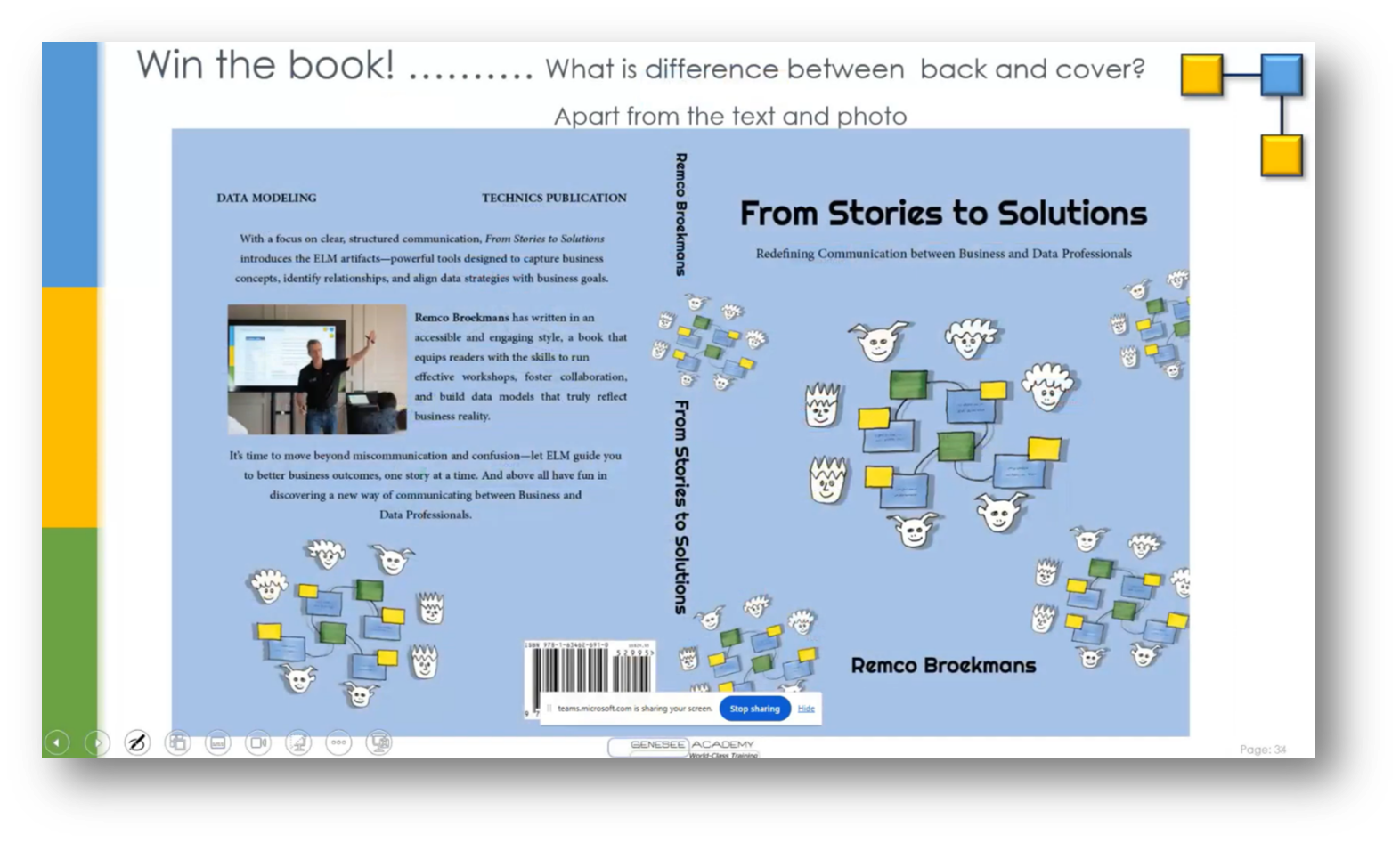From Stories to Solutions Book Launch with Remco Broekmans
Executive Summary
This webinar outlines the key themes and insights from Remco Broekmans' new Book, on data modelling and its critical intersection with business practices. ‘From Stories to Solutions’ emphasises the vital role of business analysis and data stewardship within organisations, highlighting strategies for effective communication and collaboration. Key areas include the modelling of business processes, the significance of hierarchical structures in data analysis, and the categorisation of business terms.
Remco addresses the importance of refining customer and client definitions, optimising business strategies, and fostering engagement among business professionals in information analysis. By adopting Steve Hoberman's approach of "Align, Refine, and Design." Lastly, the webinar underscores the role of a facilitator in data implementation, ensuring that business concepts are effectively translated into actionable insights.
Webinar Details
Title: From Stories to Solutions Book Launch with Remco Broekmans
Date: 23/04/2025
Presenter: Remco Broekmans
Meetup Group: Ins and Outs of Data Modelling
Write-up Author: Howard Diesel
Contents
Data Modelling, Publishing, and Industry Engagement
The Creation and Themes of ‘From Stories to Solutions’
The Intersection of Data Modelling and Business
The Role of Business Analysis and Data Stewardship in the Organisation
Data Modelling Business Processes
The Importance of Communication and Collaboration in Business and Data Modelling
Strategies for Running Workshops and Better Understanding Business Concepts
“Align, Refine and Design”
Customer and Client Definitions in Business Data Modelling
Hierarchical Structures and Data Analysis in Business
Business Terms and Their Categories
Business and Core-Business Concepts in Data Modelling
Business Strategy and Process Optimisation
Data Identity and Concept Definition in Business Concepts
Engaging Business People in Information Analysis
The Role of a Facilitator in Business and Data Implementation
Data Modelling, Publishing, and Industry Engagement
Howard Diesel opens the webinar and introduces Remco Broekmans. Howard goes on to remark that Remco and his partner, Hans Holger, are making significant strides in data modelling, particularly with their innovative approach to data vault modelling, complemented by ensemble logic that can be applied across various areas.
Remco runs a training academy aimed at educating data modellers, garnering attention from industry professionals eager to learn about this methodology. He has recently published a book, a concise read under 100 pages, which has greatly enhanced his visibility and engagement on platforms like LinkedIn, allowing him to foster discussions that bridge the gap between business and IT in data modelling.
Despite the challenges of writing and publishing, including a lengthy three to four-year process, Remco encourages others to pursue similar publishing efforts, emphasising the value of sharing knowledge and insights within the field.
The Creation and Themes of ‘From Stories to Solutions’
In his presentation, Remco shares more about himself, that he is a trainer and coach at Genesee Academy. He then introduces his newly published book, ‘From Stories to Solutions,’ and discusses its content while keeping key details under wraps.
Remco shares the story behind the book's cover art, created by his wife, which features colourful figures that symbolise the duality within organisations, representing the business side and the IT side necessary for effective data management. The cover visually depicts these concepts, with blue boxes representing hubs or identifiers, green boxes illustrating relationships, and yellow boxes denoting content, all centred around a data model. Lastly, Remco expresses his gratitude for his wife's artistic contribution, as it effectively encapsulates the essence of his work in data vault modelling.
In another slide, Remco shares that a good friend of his, Marco Wobben, crafted a playful illustration that emphasises the importance of clarity in communication, using a Smurf figure dialogue to illustrate misunderstandings. Remco then discusses the need for both technical and business professionals to speak a common language, akin to Esperanto, to facilitate understanding. Additionally, this idea aligns with the themes in my book and another author's work, John Gals, whose writing on data plans complements my perspective, highlighting how our two projects are interconnected.
Figure 1 Opening Slide
Figure 2 About the Speaker
Figure 3 "The cover art"
Figure 4 "It is all about communication"
The Intersection of Data Modelling and Business
‘From Stories to Solutions’ focuses on mapping the business landscape by bridging the gap between business and IT perspectives. Remco highlights the importance of capturing vital stories and conversations rather than merely presenting data models. Central to the book are the Elm artefacts, which consist of six key elements designed to help organisations translate business narratives into effective data models.
Remco emphasises the need for clarity in conceptual data modelling, as many business professionals struggle to understand IT-driven approaches filled with technical jargon. Real-life examples, like the case involving a hospital appointment, are utilized to illustrate the process of identifying important elements—such as people, events, places, and things—and their interrelations, ensuring that the communication between business needs and IT solutions remains clear and effective.
An example is shared to help understand the challenges of modelling data in the healthcare domain, particularly in the context of diagnosis and hospitalisation. Remco highlights the need for clarity in defining roles and types within data models, as stakeholders often struggle to comprehend the underlying business concepts without delving into the actual data. He then expresses a concern about the abstraction of technical details that can alienate business professionals who are not inclined to analyse raw data. Lastly, the emphasis should be on documenting business concepts and categorising information, such as identifying what a patient instance is or what constitutes a diagnosis, to facilitate clearer communication and understanding between IT and business teams.
Figure 5 "What is in the book?"
Figure 6 Redefining Communication
Figure 7 An Example
Figure 8 An Example Pt.2
Figure 9 "Does this make the model more clear?"
Figure 10 An Example Pt.3
Figure 11 An Example Pt.4
The Role of Business Analysis and Data Stewardship in the Organisation
An example is used to show differing interpretations, particularly in terms of the concept "bed" within a hospital context. Maintenance and janitorial staff view “bed” as a physical thing requiring upkeep, while medical professionals see it as a specific location equipped with essential utilities for patient care. This distinction highlights the need for clear communication and terminology in business settings, especially when mapping relationships like those between doctors and patients.
Effective discussions among business people are crucial for clarifying roles and conceptual models, as exemplified by the inquiry into the role of business analysts, who often bridge the gap between IT and business operations. Ultimately, facilitating these conversations is essential for accurately modelling and understanding organisational dynamics.
The relationship between IT and business within organisations is crucial, with IT professionals supporting business initiatives and business analysts acting as a bridge between the two. Ideally, business analysts and data stewards should be deeply rooted in the business side, possessing knowledge of daily operations while also understanding the technological aspects needed to communicate effectively with IT.
While some business team members may have a keen interest in technology, the real value lies in having business people who can advocate for IT solutions. The role of business analysts and data stewards is to facilitate this collaboration, ideally positioning them between business and IT. However, the nature of these roles can differ across organisations, making it challenging to define them uniformly.
Remco highlights the evolution of naming conventions in data modelling, emphasising a shift from simple technical identifiers to more functional and descriptive names for relationships between entities. Initially, relationships were labelled with basic technical names, such as "L_hospital_room," but as complexity increased, the need for clarity became apparent.
To enhance understanding among stakeholders, it is suggested to use full sentences or functional names when describing relationships, rather than relying solely on technical jargon. This approach not only aids modellers and businesses in grasping the relationships but also facilitates better communication, especially with non-technical audiences.
Remco acknowledges the influence of Marco Wobben's methods in adopting this more narrative style, making it clear that while technical names remain necessary for implementation, the focus should be on clear, relatable terminology in discussions.
Figure 12 "After Discussion with Business”
Figure 13 Mapping the Business
Data Modelling Business Processes
When approaching modelling within a business function, it is essential to focus on a specific domain and avoid attempting to encompass the entire organisation at once. Engaging with individuals who understand both the current processes and anticipated changes is crucial, as organisations often undergo restructuring that can impact business functions significantly.
It is challenging to model during periods of substantial organisational change, so it is vital to strike a balance between the scope of the project and the depth of understanding required. Starting with a clean slate is advisable, even when familiar with 60-80% of the terminology from other business functions, to ensure accurate and effective modelling.
In a recent discussion, the importance of understanding business concepts through workshops was emphasised, highlighting the need to integrate existing knowledge with newly acquired insights. The process involves playfully exploring various terms and definitions, recognising that data modelling can be both systematic and artistic in nature. A specific question arose regarding the similarity of event concepts in Elm to the traditional "unit of work" in business processes, which has historically been a challenging topic.
The term "unit of work" was previously dropped in favour of "MBR analysis" (Natural Business Relationship Analysis), which focuses on events like employment and hospitalisation as key happenings in the business context, aiding in a clearer understanding of business relationships and analysis.
The Importance of Communication and Collaboration in Business and Data Modelling
Effective communication between business and IT teams is needed to bridge the existing disconnect when it comes to data modelling. It is crucial for the business side to articulate its functions clearly, using terminology that can be understood by IT professionals. Data modelling, while technical in nature, should involve collaboration to ensure that it is accessible and relevant to everyone involved. The goal is to create a simplified and clear representation that captures what is essential for the business, as outlined in the Elm approach.
Figure 14 "It is all about communication"
Figure 15 "So what is the story??"
Strategies for Running Workshops and Better Understanding Business Concepts
In running workshops, the primary goal is to gain a deep understanding of the essence and operations of an organisation, department, or team. Participants are encouraged to share insights about their day-to-day processes, core business concepts, and the terminology they use.
This exploratory approach allows for a comprehensive gathering of relevant information, informed by the facilitator's curiosity and diverse background, which includes hands-on experience in various roles. The collected insights are categorised into key concepts such as events, transactions, and objects, and are organised using six templates, including the CBC and MBR matrices and canvases, to aid in further modelling and analysis.
Figure 16 Running Workshops
Figure 17 Workshop Model
“Align, Refine and Design”
Steve Hoberman emphasises the importance of the terms "align, refine, and design" over the traditional logic of conceptual, logical, and physical frameworks, as they are more accessible and non-technical. He advocates for understanding an organisation's activities to ensure alignment with his work, suggesting that clear identification of concepts is crucial for effective collaboration.
Remco notes that Steve Hoberman outlines a structured approach involving multiple workshops to explore the various entities and their relationships, which are then unified into a central hub. This hub manages descriptive information and changing contexts, which are critical for accurately capturing the status and timing of events within an organisation, such as those in the insurance industry. Remco then highlights the significance of using functional terms rather than IT jargon when discussing items like products and sales to foster better communication with business stakeholders. Ultimately, he aims to create a logical data model that simplifies these complex relationships while maintaining consistent identifiers.
In the context of developing a collaborative business concept (CBC), it is essential to establish clear terminology that bridges the gap between business and IT. Terms such as "invoice item" or "order line" will help align communication. The CBC includes three key artefacts: a comprehensive list of categories, a CBC canvas for completeness assessment, and a CBC form that captures definitions, main contexts, and identifiers relevant to various terms. For instance, defining a client as a "natural person buying products" allows for a better understanding of terms like customer and prospect, which represent different stages in the sales process. This initiative relies on business stakeholders providing their definitions and key information, enhancing ownership and understanding of the terminology, with data stewards facilitating from an IT perspective.
Figure 18 "What is a Core Business Concept?"
Figure 19 "What we Model"
Figure 20 What we Want: from Business Case to Ensemble Logical Data Model
Figure 21 First 3 Artifacts
Customer and Client Definitions in Business Data Modelling
The challenge is identifying customers in a business setting, particularly regarding loyalty cards as a primary means of identification. There is recognition that individuals who purchase products but do not use loyalty cards or who may have expired cards are not classified as customers under certain definitions.
The lack of identification hampers the ability to accurately assess customer metrics, such as distinguishing between one-time and recurring buyers. The organisation relies on identifiers like loyalty card numbers or credit card information to track customer data, but if such identifiers are not stored, it becomes impossible to capture relevant sales data or understand customer behaviour comprehensively.
Remco clarifies that each department has its own perspective on what constitutes a customer, relying on identifiers such as first names, last names, and phone numbers. This lack of a standardised customer definition across the business is identified as a key issue. To effectively communicate and synchronise with the department, it’s crucial to use their language and focus on their specific needs, despite recognising that a broader enterprise data model will require more detailed customer categorisations in the future.
Aligning definitions and identifiers for "client" and "customer" is important within an enterprise context. Remco recognises that while some may perceive both terms as synonyms, they can also represent distinct concepts depending on their relationships with the business. Clients often signify long-term engagements, whereas customers may include individuals with one-time interactions, such as those at a store. This divergence in understanding necessitates a consensus on terminology to ensure clarity in communication and categorisation, ultimately supporting a more effective engagement with both local and enterprise customers.
Hierarchical Structures and Data Analysis in Business
The importance of visualising relationships in a business context is mentioned, specifically through an event analysis framework, such as the event canvas. Remco suggests that in order to effectively understand the dynamics of sales events, key elements like the sale, store, product, and customer must be identified and overlaid. This includes analysing cardinality to address issues of sparsity and redundancy within relationships. By using examples like specific transactions, Remco highlights how redundancy can occur, for instance, with repeated entries related to customers, products, and events, ultimately aiming to clarify and streamline data for better insights.
Remco outlines the relationships between sales and products within the context of the Remco Utrecht homes. He highlights a specific sale, referenced as Sale #501, which consists of various products associated with it. The focus is on understanding the intricacies of each product linked to a sale, emphasising the need for detailed descriptions and artefact associations. This information serves as a crucial reference point for data management, resembling a best practice matrix designed to facilitate clarity and ease of understanding for those involved in data processing. Overall, this serves as a foundational piece for effective sales and product management within the context discussed.
Figure 22 “ELM Artifact 4 – Event Canvas”
Figure 23 Modelling Natural Business Relationships
Figure 24 “ELM Artifact 6 - NBR Form”
Figure 25 NBR Analysis
Figure 26 "ELM Artifact 5 - NBR Matrix"
Business Terms and Their Categories
Remco outlines an ontology focused on business terminology, specifically emphasising the categorisation of concepts such as "L" terms, the LM approach, and data-centric methodologies like Data Vault and Anchor Modelling. He then proposes that business terms can be translated into core business concepts, organised into ensembles for effective identification and contextual understanding.
Categorisation is imperative when defining relationships, business keys, and metrics, while also integrating attributes such as identifiers and context within the ontology framework. Remco emphasises this with an example of terms like "date of birth" or "loyalty card number" that can be viewed as business terms and may fall into either core concepts or contextual attributes.
Figure 27 The Ontology
Figure 28 The Ontology Pt.2
Figure 29 The Ontology Pt.3
Figure 30 The Ontology Pt.4
Business and Core-Business Concepts in Data Modelling
During a discussion focused on business terms and core business concepts, an attendee raised questions about the importance of business terms in relation to core concepts. They noted that while the beam methodology does not emphasise the necessity of business terms as part of the structure, in Elm, they play a crucial role.
Remco highlights that every business term must be translated into a core business concept, which is determined during discussions with stakeholders. For instance, terms like "Remco" or "date of birth" can start as business terms but may represent broader concepts or descriptive information upon closer inspection. He then emphasised the need for an initial brainstorming session to capture potential core business concepts from business terms while filtering and categorising them during the process, leading to a distinction between true core concepts and ancillary information.
Business Strategy and Process Optimisation
Remco shares that he has compiled important business terms related to the Willibald case, focusing on the operations involving plants and seeds sold through a webshop. He has documented discussions on the order process, including order placement, delivery dates, and warehouse management, while making sketches to visualise the workflow. However, Remco notes that he won’t be going into the specifics of order picking due to the complexity and ongoing changes in that area, keeping the focus on the foundational elements of the business.
A discussion regarding the organisation of a project that involves categorising various elements takes place. This included the ordering process and associated events like delivery. The importance of defining customer interactions within a webshop and the product offerings is emphasised. Additionally, there was a critique of an automation team’s approach, which overlooked the foundational business context in favour of available tools, resulting in suboptimal modelling outcomes. Lastly, Remco notes that his book serves as an auditable resource, documenting the process from workshops to final steps, allowing for clear tracking of decisions and methodologies used throughout the project.
Figure 31 Willibald
Figure 32 Willibald Pt.2
Figure 33 Willibald Pt.3
Figure 34 Mapping Business Terms
Figure 35 "Win the book!"
Data Identity and Concept Definition in Business Concepts
‘From Stories to Solutions’ provides a comprehensive overview of various business concepts and their identifiers, consolidating information that was previously spread across different sources. Remco notes that the book highlights the complexity of having different concepts with identical identifiers, as well as the issue of the same concept being represented by different IDs. For instance, within an airline's HR system, both pilots and employees share an employee number, indicating they belong to distinct business concepts despite the same identifier. Conversely, he adds that when identical concepts have different IDs from separate systems, such as customer identifiers in different CRM platforms, it necessitates additional verification to determine if they refer to the same individual.
Lastly, the book emphasises the importance of clear definitions. Remco notes that this indicates that while various identifiers may exist, consensus on the underlying concept is crucial for effective data modelling and integration. However, caution is advised against overcomplicating definitions, as a balance must be struck to ensure they are practical and sufficient for consensus.
Engaging Business People in Information Analysis
The discussion revolves around the challenges faced by business analysts when engaging with business stakeholders, specifically in communicating complex ideas. Remco emphasises the importance of adopting a non-technical approach when initiating conversations, suggesting that analysts ask open-ended questions to understand the organisation and its functions.
By encouraging business people to share their experiences without labelling the process, analysts can foster a more collaborative environment. This method allows for the collection of relevant terms and insights, laying a foundation for further discussions without overwhelming stakeholders with jargon or preconceived frameworks.
Remco then emphasises the importance of engaging individuals in conversations to foster collaboration, using the metaphor of a frog in heated water to illustrate stagnation in communication. He advocates for conducting workshops with small groups (6-8 participants) to encourage dynamic interactions, where attendees can share insights and collectively construct a narrative without realising they are doing so. Additionally, Remco encourages newcomers to the organisation to seek help and information from others, highlighting that terminology is less important than the quality of the interaction and engagement.
The Role of a Facilitator in Business and Data Implementation
As a facilitator, the goal is to encourage participants to share their stories and insights about their organisation rather than jumping straight to solutions. This requires steering the conversation away from preconceived solutions, especially in workshops where participants are not permitted to use laptops. The importance of focusing on gathering information about the organisation and its needs is emphasised.
Remco emphasises the acceptability of data duplication within specific contexts, such as in healthcare, where terms like "first name" may recur across different entities (e.g., patients and doctors) but still represent distinct individuals. He expresses confidence in retaining duplicate data across multiple satellites, arguing that it aids in accurately describing individuals and their attributes. Lastly, Remco adds that the complexities and risks associated with trying to generalise or abstract data, as this often entails the need for additional information, can lead to complications in data retrieval.
If you would like to join the discussion, please visit our community platform, the Data Professional Expedition.
Additionally, if you would like to be a guest speaker on a future webinar, kindly contact Debbie (social@modelwaresystems.com)
Don’t forget to join our exciting LinkedIn and Meetup data communities not to miss out!


